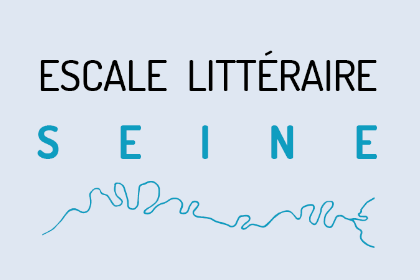Paris - Les îles
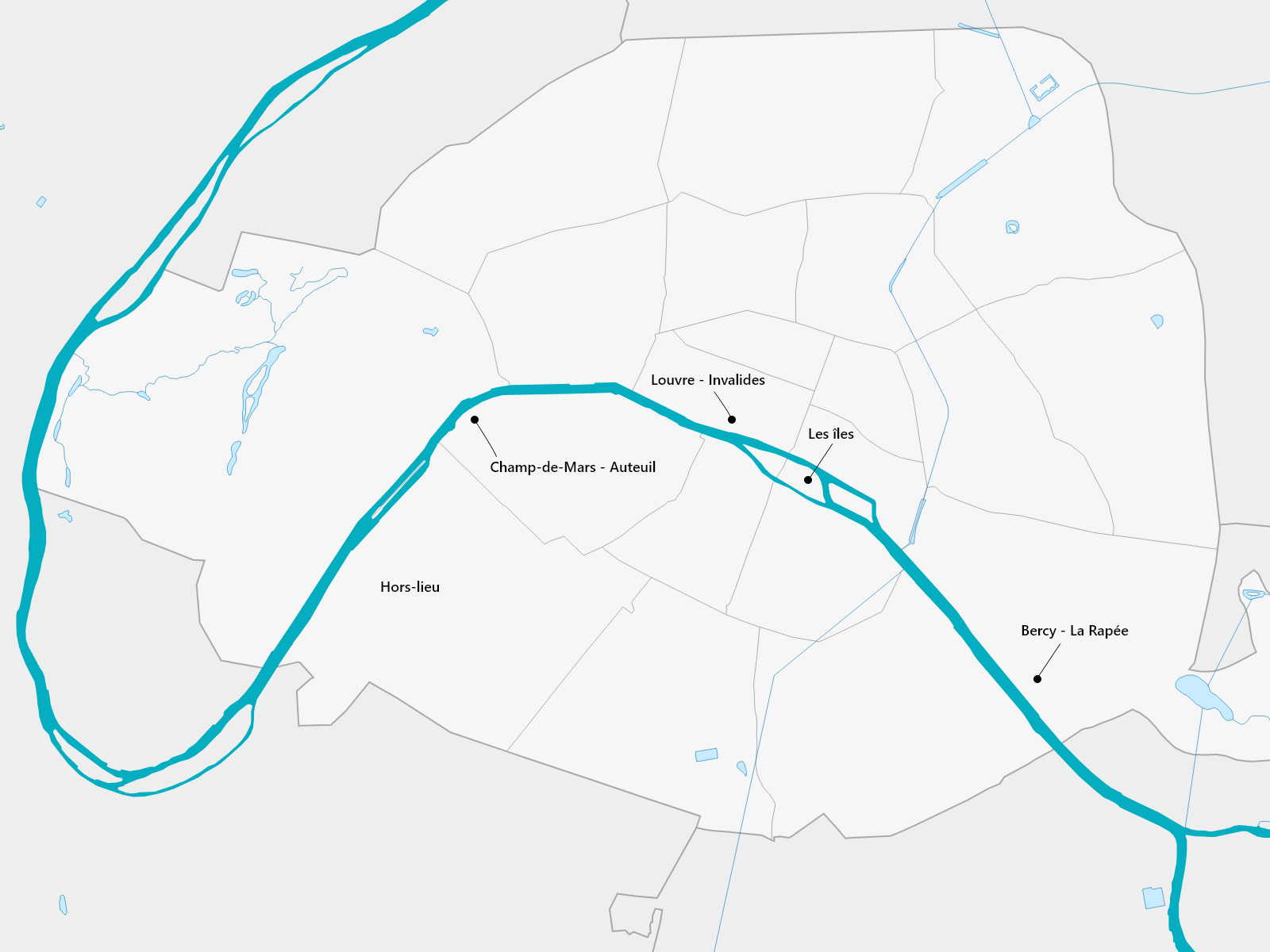
At first, the Seine river was a barrier and the site now known as Paris, a ford. In so many different ways, the Ville Lumière retains, even to this day, its connective role. The river, on the other hand, no longer truly separates peoples from each other. Quite the contrary, it is a federating force: the original antagonist of Paris was to become its most important ally.
For Julius Caesar, the Seine divides the habitable land into distinct Gallic provinces. For Jacques Réda, it unites the poet’s self with the red fire alarm standing on the opposite shore. Between the two the river flows, a distinctive border turning to blurry mirror. And two thousand years passing by.
In medieval chronicles the river is shown as a raging threat, and religion appears to be the only way of appeasing God’s wrath. There is truth to this. The catholic church did establish its dominance in the Parisian region by eradicating evils that were specifically fluvial: floods of course, but also miasma from adjacent wetlands and swamps, and crime and poverty proliferating along the banks. Ills of the body and of the spirit.
The collective imagination would eventually leave such issues behind, these being much too corporeal and earthly to the classical taste that was dawning. The river thus became, more than anything, a symbol. Embodying wealth, fertility, power, the Seine is heralded as a national symbol in works by Malherbe, Racine, and even in later patriotic poems such as du Boccage’s La Colombiade.
Soon more intimate scenes were to appear, in which the Seine river would play the role of a confidante or even of a friend. This is seen in works by Anne de La Vigne, Antoinette Deshoulières, Paul Pellisson, and remains prevalent more than one hundred years later in pastoral elegies like the one Marceline Desbordes-Valmore titled “À la Seine”. Bridging the gap between the 17th and 19th centuries, this early romantic trait also shines through in the 18th-century Enlightenment poetics of Lebrun-Pindare and Montanclos.
In multiplying the technical innovations that allowed Parisians to tame their great river and harvest its natural power, the Seine by the 1830s appeared hybridized. Novelists insisted on highlighting the long-lost primitive bucolic charm only found now in certain secret nooks, while hailing the water body as a modern icon of urban productivity (or depravity). Balzac, Hugo and their followers glorify the Seine, and make it into an intrinsic part of mythical Paris.
Somehow, the more this river is set in stone the more it strikes the imagination. Once decidedly illustrious, the Parisian Seine started segmenting into areas of particular interest, worthy of panoramic description or poetic transfiguration. The port de Bercy is offered up by Daudet; the pont Mirabeau, by Apollinaire. Zola, Hemingway and Aragon sketch the île Saint-Louis, while Houellebecq peers into Paris-Plages, and Anna de Noailles takes us down the bend to Saint-Cloud and Sèvres. A few twists further, towards Neuilly, Judith Gautier takes us canoeing much like Maupassant did before along the banks of Argenteuil and Croissy.
As a whole, the body of texts starring the Seine in Paris and its suburbs provides new insight into certain feature focal points along the river’s path. Foremost among these is an expected item: Notre-Dame, with its arch buttresses like “the ribs of a gigantic fish”, according to Théophile Gautier (Judith’s father). Close rivals to the world’s most famous gothic monument include the Pont-Neuf, the old Louvre, and the Tour de Nesle (demolished in 1665, legend has it a queen used to throw her lovers to the river from this tower). The macabre note rings even louder with the Morgue and the ever-popular Inconnue de la Seine. Enough maybe to alter one’s sightseeing priorities.
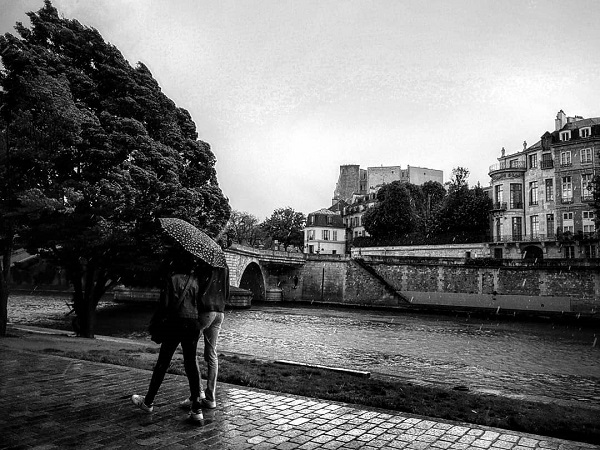 Les amoureux © François Guillotte
Les amoureux © François Guillotte

Pierre de RONSARD, La Franciade, 1572 / Paris-Les îles
Anonymous

Pierre de RONSARD (1524-1585) écrit la Franciade (1572), poème épique inachevé qui conte la fondation de la monarchie française par Francus (ou Francion), prétendu fils d’Hector. La mode est aux classiques de l’Antiquité grecque ou romaine ; prédomine l’idée que la cité séquanaise détiendrait une origine troyenne. Paris est le « siège royal » de France, pourtant, ce n’est pas sans épreuves et combats sanglants que Francus devra conquérir la ville bordée par la Seine.
"Tout flamboyant dans son harnais étincelant,
Il quittera le rivage gaulois.
Comme un torrent se renouvelle en ses flots
Il parcourra les champs de la Moselle,
Puis, en l’honneur de son oncle Pâris,
Aux bords de la Seine, il fondera Paris,
Pour en faire le siège royal d’un superbe pouvoir.
Mais, pour l’instant, Paris n’est qu’un champ d’herbes,
Qu’une île coincée entre deux flots tortueux,
Où le Ciel enverra force et courage,
Pour construire des maisons de marbre,
Qui auront l’éclat des étoiles.
De nombreux combats auront lieu aux portes de la ville,
La Seine s’enflera devant tous ces meurtres,
Charriant à gros bouillons sanglants, dans sa course vagabonde,
Des hommes, des chevaux et des armes dans ses ondes."
"Tout flamboyant en l’esclair du harnois
Descampera du riuage gaulois.
Comme un torrent qui s’enfle & renouuelle,
Viendra couurir les champs de la Mozelle,
Puis en l’honneur de son oncle Pâris,
Aux bords de Seine ira fonder Pàris,
Siege royal d’un sceptre si superbe.
Or, ce Páris qui maintenant n’est qu’herbe,
Isle serrée entre deux flots tortuz,
Dedans le Ciel enuoira ses vertuz,
Et ses maisons en marbre elabourées
Voisineront les estoilles dorées.
Deuant le mur meint combat se fera,
Seine, de meurtre à bouillons s’enflera,
Tournant sanglante à courses vagabondes
Hommes, cheuaux & armes sous les ondes."
Pierre de RONSARD, Les Quatre premiers Livres de la Franciade, Paris, Gabriel Buon, 1572, p. 8-9.
Français modernisé par Carine Roucan.
Consultable : Gallica
16th-17th century | Poems | In | Along | Under

Nouvelle traduction : Gilles CORROZET, La fondation de Paris / Paris-Les îles
Anonymous

The Seine is inherent to Paris. The riverbed was a crib to the city; and its water was its wet-nurse. But the founding of the city is lost in the haze of a past so distant it is probably pointless to pinpoint the exact moment, if there was one in the long trail of history, that riverside life supposedly begun on this site; likewise, it seems illusory to identify who and when started the use of the name Paris. Gilles Corrozet’s (1510–1568) historiographical attempt, almost five hundred years ago, already gave a colourful overview of the profusion of hypotheses.
« Cette cité felon l’opinió de Iean le maire fut conftruite & edifiee par Paris dixhuitiéme Roy de Gaule, & de fon nom fut Paris appellee, foixáte & dix ans apres la premiere fondation de Troye […].
Les autres difent q Hercules voulát aller en Efpaigne par les Gaules paffa, & s’arrefta en vne ifle enclofe de la riuiere de Seine, auquel lieu vne compagnie de fes gens Parrafiens nómez delaiffa, lefquelz en mutatió de A en I, furét & encores font Parifiés nómez, & par eux fut la cité de Paris edifiee.
Maitre Nicolle Gilles & Raoul de Prefles tráslateur de la cité de Dieu, dfent qu’elle fut edifie par les Troyés & Sichambriens deux cens trente ans après la fondation de Sichambre, faite par Francus filz d’Hector […], et la nommerent Paris en l’honneur de Paris, filz du Roy Priam de Troye. Puis fut Lutheffe appellee à Luto, qui greffe de terre fignifie. […]
Plusieurs Auteurs Latins appellent Paris ciuitas Iuly, non pas que Iules Cefar l’ait fondee, mais grandement l’ha multipliee & augmentee […]. »
Gilles CORROZET, La fondation de Paris, dans Gilles Corrozet et Claude Champier, Le Batiment des antiques erections des Gaules, Lyon, Benoist Rigaud; Jan Saugrain, 1556, p. 32-33.
Consultable sur Gallica
16th-17th century | Historiography | Along
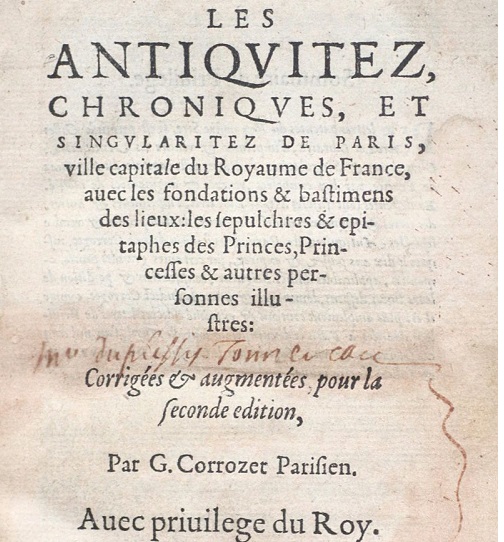
Nouvelle traduction : Gilles CORROZET, Les Antiquitez. Chroniques et singularités de Paris, 1561 / Paris-Les îles
Anonymous

The well-respected Parisian writer, publisher and printer Gilles Corrozet (1510–1568) published important and diverse books. His catalogue counts many illustrious writers’ names. Among his own works, there are history books, blazons of the female body (very fashionable at the time) and fables (adapted from the Aesopica). The collection Antiquités, Chroniques et singularités de Paris belongs to the first category. It was first published in 1550 and republished over and over, with additional facts and anecdotes each time. Of course, the Seine makes some appearances in it. None is as striking as this one
« L’an mil quatre cens quatrevingts feize, le fleuue de Seine fe desborda iufques dans la rue & maifons de la Megifferie, & autant ailleurs, en forte que le lieu de la vallée de Mifere eftoit couuert d’eau iufques à la porte de Paris. Pour fouuenance de cela fut engraué dans vne pierre d’vne maifon faifant le coing de la Megifferie en ladicte vallée ce qui f’enfuit :
Mil quatre cens quatrevingts Seize,
Le feptiefme iour de Ianvier,
Seine fut icy à fon aife,
Battant le fiege du pillier. »
En français modernisé :
"L’an mil quatre cent quatre-vingt-seize, le fleuve de Seine déborda jusque dans la rue & les maisons de la Mégisserie, & autant ailleurs, en sorte que le lieu de la vallée de Misère était couvert d’eau jusqu’à la porte de Paris. En souvenir de cela, il fut gravé sur une pierre d’une maison faisant le coin de la Mégisserie, dans cette vallée, ce qui suit :
En Mil quatre cent quatre-vingt-seize,
Le septième jour de janvier,
La Seine fut ici à son aise,
Battant le bas du pilier."
Gilles CORROZET. Les Antiquitez, Chroniques et singularitez de Paris, ville capitale du Royaume de France, auec les fondations & batimens des lieux : les fepulchres & epitaphes des Princes, Princeffes & autres perfonnes illuftres [1550], corrigées & augmentées pour la feconde edition, Paris, Gilles Corrozet, 1561, p. 148-149.
16th-17th century | Historiography | In | Under
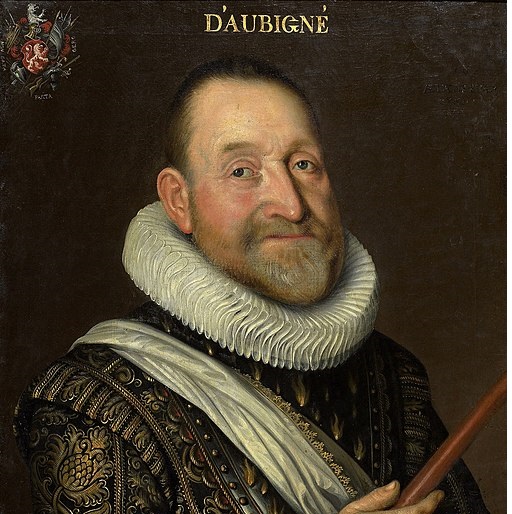
Théodore AGRIPPA D’AUBIGNÉ, La Confession catholique, 1660 / Paris-Les îles.
Anonymous

For a long time, the Pont Neuf was a very dangerous place. It was infested with thugs before its construction was even finished, as Theodore Agrippa d’Aubigne (1552–1630) tells us in a passage from Hell Illuminated, or, Sancy’s Roman Catholic Confession, published in 1660 after his death. This text is an incendiary pamphlet written in reaction to the second conversion to Catholicism of the opportunist Nicolas de Harlay, Lord of Sancy, in May 1597. It was written in conjunction with the last decade of the construction of the Pont Neuf, which started as early as 1578, but at a standstill between 1588 and 1598. As soon as it was finished in 1607, the situation got much worse. Purse stealers and other thieves made of the most frequented passage of Paris, the theatre of their operations. One can understand why the moralist wondered what judgment could await these miscreants.
"Et quant à ceux là qui fe logeoient dans les niches du pont neuf, lors non achevé, & qui au foir & la nuict prenoient par un pied ceux qui paffoient fur le pont, & les ayants precipités & despoüillés les jettoient dans l’eau, & ceux là fi om a fait quelque difficulté de les fanctifier, il faut avoir efgard s’ils prefuppoient, ne faire mal qu’à des heretiques."
En français modernisé :
"Il faut se demander si ceux qui ont éprouvé une certaine réticence à punir les brigands qui se nichaient le soir et la nuit sur le Pont-Neuf, pas encore achevé, et détroussaient les passants en les attrapant par un pied pour les faire tomber, avant de les jeter à l’eau, avaient à l’esprit que ceux qu’ils devaient châtier étaient avant tout des hérétiques."
AGRIPPA D’AUBIGNÉ, Théodore. Confession catholique du sieur de Sancy, Et declaration des caufes, tant d’Eftat que de Religion, qui l’ont meu à fe remettre au giron de l’Eglife Romaine, [1660], [s.l.], [s.d.], p. 93.
16th-17th century | Historiography | On | In | Along
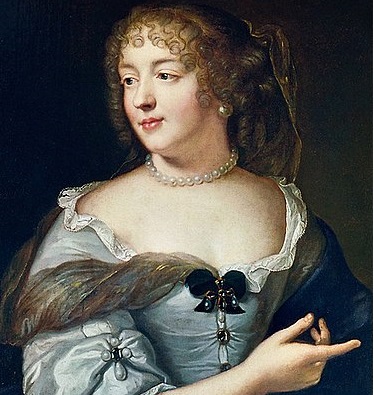
Nouvelle traduction : Madame de SÉVIGNÉ, « Lettre du 22 juillet 1676 » / Paris-Les îles
Anonymous

The summer of 1676 was a hot one according to the letters sent by the Marquise de Sévigné (1626–1696) to her daughter, the Countess of Grignan (1646–1705). That year, Madame de Sévigné had gone to Vichy to cure her rheumatisms. On the way back, the letter-writer complained of “very hot weather” affecting the country and leaving the Loire “entirely dried up in several places” (letter from 24th June, in Briare). She was mostly worried that the drought would jeopardize navigation, thus complicating the journey between the south and the capital. Her “dear child”, sorely inaccessible since moving to Grignan (Drôme Provençale), was planning on joining her in Paris soon for a trip which was considered to be “the last and surest method of restoring her to perfect health” (letter from du 1st July, in Paris). The journey involved embarking at Roanne in order to travel down the Loire to Briare (letter from 1st July, in Paris); the rest could be done on dry land. However, on 22nd July, despite the fast-approaching deadline, enough time remained to be amused by the fact that the scarce rainfall allowed Parisians to avoid the toll fees of crossing the Seine.
« Mon carrosse ne vous manquera point à Briare, pourvu qu’il puisse revenir de l’eau dans la rivière : on passe tous les jours à gué notre rivière de Seine, et l’on se moque de tous les ponts de l’Île. »
SÉVIGNÉ, marquise de (Marie de Rabutin-Chantal), "Lettre 559 (22 juillet 1676)", Lettres de Madame de Sévigné, de sa famille et de ses amis, texte établi par Louis Monmerqué, Paris, Hachette, 1862, t. 4, p. 531-539.
Consultable en ligne
16th-17th century | Personal essay | On | In | Under
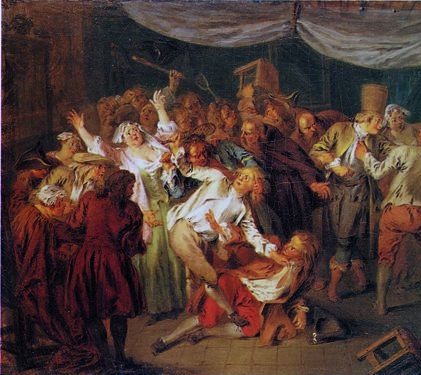
Nouvelle traduction : Paul SCARRON Paul, Le Roman comique, 1651 / Paris-Les îles.
Anonymous

Paul Scarron (1610–1660), who was highly successful for his burlesque verses, published in 1651 the first volume of a satirical novel that is now his best-known work. Le Roman Comique (1651-58) was against the flow of romance novels that were fashionable back then. It multiplies humorous turnarounds and funny misadventures that are written in a simple and direct style that would inspire Théophile Gautier to write his famous novel Captain Fracasse (1853). The story introduces the incredible escapade of theatrical troupe members in Le Mans and its surroundings, and showcases Le Destin and his friend La Rancune grappling with the evil genius Saldagne, a gentleman tracking them down everywhere, seeking to avenge an affront. One of the episodes told by Le Destin takes place at Saint-Cloud where the Seine is in the limelight.
« Comme nous passions lui [La Rancune] et moi sur le pont-neuf, bien avant dans la nuit, nous fûmes attaqués par cinq ou six tire-laines. Je me défendis le mieux que je pus, et pour la Rancune, je vous avoue qu’il fit tout ce qu’un homme de cœur pouvoit faire, et me sauva même la vie. Cela n’empêcha pas que je ne fusse saisi par ces voleurs, mon épée m’étant malheureusement tombée des mains. La Rancune qui se démêla vaillamment d’entr’eux, en fut quitte pour un méchant manteau. Pour moi, j’y perdis tout à la réserve de mon habit; et, ce qui pensa me désespérer, ils me prirent une boëte de portrait, dans laquelle celui du père de Léonore étoit en émail, et dont mademoiselle de la Boissière m’avoit prié de vendre les diamans. Je trouvai la Rancune chez un chirurgien au bout du pont-neuf. Il étoit blessé au bras et au visage ; et moi, je l’étois fort légèrement à la tête. Mademoiselle de la Boissière s’affligea fort de la perte de son portrait ; mai l’espérance d’en revoir bientôt l’original, la consola. Enfin, nous partîmes de Paris pour Péronne ; de Péronne nous allâmes à Bruxelles, et de Bruxelles à la Haye. »
SCARRON, Paul. Le Roman comique [1651], dans Œuvres de Scarron, nouvelle édition, plus correcte que toutes les précédentes, Paris, J.F. Bastien, 1786, t. II, p. 141-142.
Consultable en ligne
16th-17th century | Novel, short story | Along
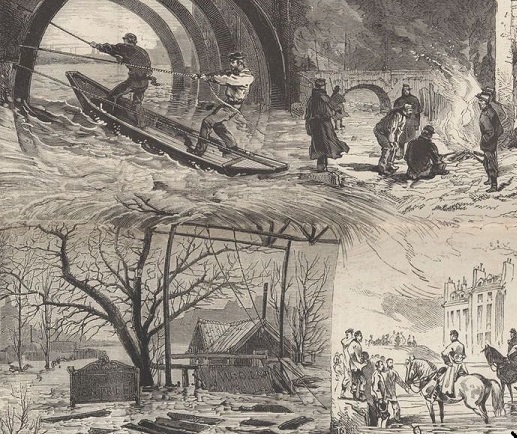
Paul SCARRON, « À M. Pellisson, épître IV », v. 1651/ Paris-Les îles
Anonymous

In 1651, Paul Scarron (1610–1660) sent four decasyllabic epistles to Paul Pellisson (1624–1693), all of which both lighthearted and sorrowful, where the author, frustrated with his lot and complaining about the cold or the price of firewood, appeals to his wealthier friend’s generosity. The fourth letter’s protagonist is the Seine: on 25th January 1651, the water level reached a massive 7.83m at the Pont de la Tournelle, half of which was swept away by the river. Scarron himself had no idea that this record would soon be beaten by a considerable amount (far above the 8m mark in 1658).
« Je me plaignois du froid âpre et cruel,
Et je me plains du terrible dégel.
De gros torrens, et de néges fondues
La Seine enflée à vagues répandues,
Du grand Paris inonde les dehors ;
Ou se lassant de ses antiques bords,
Ou se fâchant de n’être que rivière,
Ou seulement pour se donner carriére,
Si trop souvent elle croit son grand cœur,
Et par les champs elle marche en vainqueur,
Faisant par-tout des mers longues et larges,
Il lui faudra des montagnes pour marges.
Le haut Montmartre, et Meudon l’orgueilleux,
S’étonneront de la voir si près d’eux,
Et que la troupe écaillée et muette
Nage où chantoit autrefois l’alouette.
Le pont superbe, où sur un pied d’estal
Le grand Henri vit encore en métal,
Des autres ponts de fragile structure
Doit déplorer la funeste aventure,
Et compatir à leur danger mortel,
Pour peu qu’il soit pont de bon naturel.
L’eau qui des quais couvre toutes les marches,
Laisse à lui seul l’honneur d’avoir des arches ;
Seul pont encore, il voit ses compagnons
Ne garder plus leurs figures de pons.
Tout est canal, que sans cesse on trajette ;
La barque flotte où rouloit la charrette ;
Dans les cantons voisins de l’arsenac,
On ne fait plus ses visites qu’en bac ;
Dans les maisons, les basses écuries,
Caves, caveaux, buchers, sommeleries,
Sont devenus réservoirs à poisson,
Et l’on peut s’y servir de l’hameçon.
Enfin Paris, du moins une partie,
Offre à nos yeux Venise travestie,
Où les brochets peuvent en sureté
Venir nager par curiosité.
La Seine enfin ne fut jamais si fiére,
Et ne fit tant de la grosse riviére.
Enfin ses grands, mais dangereux progrès,
N’ont fait qu’un lac des jardins du marais :
Et plût à dieu, qu’un peu moins de salades
Fût tout le mal qu’ont fait ses incartades !
Du pont de l’île en un instant fondu,
Non sans horreur, l’insulaire éperdu,
Voit la grand’bréche et le vuide effroyable.
Mais, ô malheur encor plus déplorable !
Le bois flotté, l’espoir de nos foyers,
Flotte sur l’onde ; et loin de ses chantiers
Est le butin du premier qui l’attrappe :
Et cependant le marchand qui se frappe,
Le poil s’arrache et se mange les doigts,
Fait pitié ; mais hausse le prix du bois.
À moi l’hiver, qu’il géle ou qu’il dégéle,
Me fait toujours une guerre cruelle ;
Mais, si tu veux, en glissant quelques mots,
En fût-ce même un peu mal-à-propos,
Ton généreux, ton adorable maître,
Le mien ami, se souviendra peut-être
Du nouveau don que ton dernier billet
Fit espérer à son humble valet. »
Orthographe modernisée :
"Je me plaignais du froid âpre et cruel,
Maintenant je me plains du terrible dégel.
De gros torrents, des neiges fondues,
Le Seine gonflées d’énormes vagues,
Du grand Paris inonde les rues ;
Ou, se lassant de ses rives antiques,
Ou se fâchant de n’être qu’une rivière,
Ou seulement pour se déchaîner,
Car trop souvent elle se croit très courageuse,
Et par les champs elle marche en vainqueur,
Formant partout des mers longues et larges,
Seules des montagnes pourront arrêter sa course.
Le haut Montmartre, et Meudon l’orgueilleux,
S’étonneront de la voir si près d’eux,
Et que des troupeaux couverts d’écailles et muets
Nagent là où chantaient autrefois les alouettes ;
Le pont superbe, où sur un piédestal,
Le grand Henri vit encore, en métal,
Ne peut que déplorer la funeste aventure
Des autres ponts superbes mais fragiles,
Et compatir à leur danger mortel,
Pour peu qu’il soit un pont de bonne nature.
L’eau qui des quais couvre toutes les marches,
Laisse à lui seul l’honneur d’avoir des arches ;
Seul pont encore, il voit ses compagnons
Perdre leur figure de ponts.
Tout est devenu canal, que l’on doit traverser ;
La barque flotte là où roulait la charrette ;
Dans les cantons voisins de l’Arsenal,
On ne fait plus ses visites qu’en bac ;
Dans les maisons, les basses écuries,
Les caves, caveaux, bûchers, sommelleries,
Sont devenues des réservoirs à poissons,
Et l’on peut s’y servir de l’hameçon.
Enfin paris, du moins une partie,
Offre à nos yeux une Venise travestie,
Où les brochets peuvent en sûreté
Venir nager par curiosité.
La Seine, enfin, ne fut jamais si fière,
Et ne fit jamais tant la grosse rivière.
Enfin, ses grands mais dangereux progrès,
N’ont fait qu’un lac des jardins du Marais,
Et plût à Dieu qu’un peu moins de salades
Fût tout le mal qu’on fait ses incartades !
Du pont de l’île, en un instant fondu,
Non sans horreur, l’insulaire éperdu,
Voit la grande brèche et le vide effroyable.
Mais, ô malheur encore plus déplorable !
Le bois flotté, l’espoir de nos foyers,
Flotte sur l’onde ; et loin de ses chantiers
Et le butin du premier qui l’attrape :
Et voyant cela le marchand se frappe,
S’arrache les cheveux et se mange les doigts,
Il fait pitié ; mais il hausse le prix du bois.
À moi l’hiver, qu’il gèle ou qu’il dégèle,
Me fait toujours une guerre cruelle ;
Mais si tu veux, en glissant quelques mots,
En fût-ce même un peu mal-à-propos,
Ton généreux, ton adorable maître,
Le mien ami, se souviendra peut-être
Du nouveau don que ton dernier billet
Fit espérer à son humble valet."
SCARRON, Paul. « À M. Pélisson : épître IV » [1651], dans Œuvres de Scarron, nouvelle édition, plus correcte que toutes les précédentes, Paris, J.F. Bastien, 1786, t. VII, p. 91-92.
16th-17th century | Poems | On | In | Along
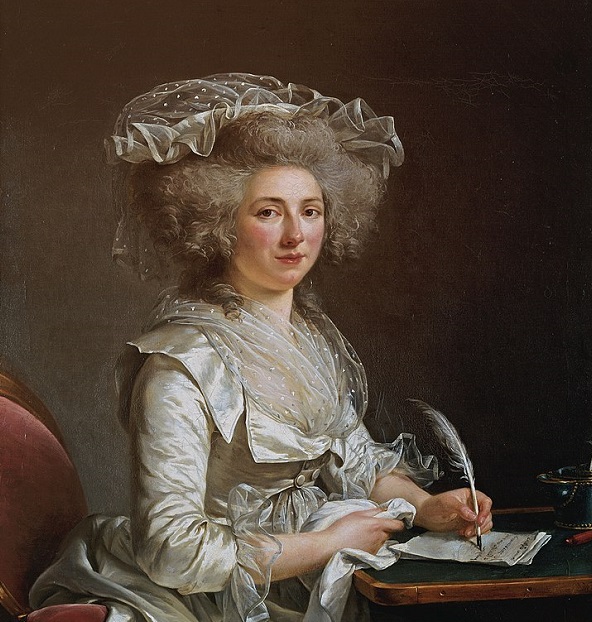
Marie-Émilie MONTANCLOS, « Vers faits sur la rivière de Seine », 1790 / Paris-Les îles.
Anonymous

How can a Parisian woman “forget a fickle relationship”? Marie-Émilie de Montanclos (1736–1812) has a clear answer: the Seine River has the amazing power to bring back the souls lost to bewilderment. All one needed was to go down the rue des Bernardins, where the author lived, to find banks kept in a wild state. In this poem published in 1790, the “pure abstraction wave” clears the illusion. Everywhere, the contrast between the clear and peaceful water, revealing of what exists, and the agitation, the fire, the fantasy of deceived love is striking. Besides, the only faulty verse there, is the one about “fateful imagination!” In fact, the unusual rhythm follows a significant pattern. The verse grows as the stanza goes. The more you go down, the wider it gets, like the river getting progressively larger as it approaches its end. Not rural nor urban, is this water really from Paris? The clearness mentioned as “weak and doubtful” does not give a proper answer, but the Moon is conspicuously absent. It is possible to suspect the lighting of the capital’s oil lanterns and lampposts, as gas lighting would only be invented the next year.
« Ô NUIT, fymbole du repos !
Produis, fur mon ame agitée,
Le prompt oubli de tous les maux
Dont tu la vois inquiétée.
En ce moment, j’implore tes faveurs,
Pour me fouftraire à la mélancolie ;
Que ton obfcurité, qui cache mes douleurs,
Amene, par degrés, la douce rêverie !
Et toi, que le calme embellit,
Onde ! tu fuis, d’un cours tranquille,
L’efpace qu’une main habile
A tracé pour former ton lit.
Riviere fi majeftueufe !
Une clarté foible & douteufe
M’aide à contempler ta beauté.
Sur ma bouche filencieufe
Viendroit le mot de volupté,
Sans l’extafe religieufe
Qui captive ma volonté.
Je ne vois que l’Être fuprême ;
J’admire fes nobles travaux ;
Et la fécondité que l’on doit à tes eaux,
Me fait adorer le fyftème
De ce Créateur fi puiffant,
Dont l’immenfe favoir tira, du chaos même,
Cet ordre fublime & touchant,
Qui, chaque jour, unit le plus fimple à l’extrême.
Du feu l’ardente activité
Confumeroit ma fragile exiftence ;
La terre, en fon aridité,
Me refuferoit l’abondance ;
Un fluide utile furvient ;
Nos champs font arrofés ; tout renaît, tout enchante.
L’air, à fon tour, m’anime, me foutient,
Et ces dons précieux devancent mon attente.
Ah ! de ce Dieu fi bienfaifant,
Que tout, dans l’univers, rappelle à ma mémoire,
Je ne fuis qu’un ingrat enfant.
Qu’ai-je fait encor pour fa gloire ?
FUNESTE imagination !
Mere des erreurs de tout âge,
De toi naquit l’illufion,
Qui fut l’écueil de plus d’un Sage.
Tu m’égarois, en me flattant :
Sous les fleurs tu cachois l’abyme :
D’un preftige trop féduifant,
Mon foible cœur fut la victime…
Va, c’en est fait ! le trouble de mes fens
Se diffipe à l’afpect de cette onde fi pure.
En vain, du tendre Amour, tu me peins le murmure ;
Je ne le prendrai plus pour fujet de mes chants.
Je vais donner à la Philosophie,
Solide & douce en fa févérité,
Les derniers inftants d’une vie
Dont les malheurs font la célébrité.
Et vous, foyez toujours paifibles,
Limpides eaux, à qui je dois
Des plaisirs innocents, & qui me font poffibles.
Du fort les rigoureufes lois
Ne foumettent point ma penfée.
A vous revoir, tendrement empreffée,
Je viendrai, fur ces bords, rappeler à mon cœur,
Que le calme profond, dont vous m’offrez l’image,
Me fit, quelques momens, oublier un volage,
Et dans l’indifférence, entrevoir le bonheur. »
Français modernisé :
Ô NUIT, fymbole du repos !
Produis, fur mon ame agitée,
Le prompt oubli de tous les maux
Dont tu la vois inquiétée.
En ce moment, j’implore tes faveurs,
Pour me fouftraire à la mélancolie ;
Que ton obfcurité, qui cache mes douleurs,
Amene, par degrés, la douce rêverie !
Et toi, que le calme embellit,
Onde ! tu fuis, d’un cours tranquille,
L’efpace qu’une main habile
A tracé pour former ton lit.
Riviere fi majeftueufe !
Une clarté foible & douteufe
M’aide à contempler ta beauté.
Sur ma bouche filencieufe
Viendroit le mot de volupté,
Sans l’extafe religieufe
Qui captive ma volonté.
Je ne vois que l’Être fuprême ;
J’admire fes nobles travaux ;
Et la fécondité que l’on doit à tes eaux,
Me fait adorer le fyftème
De ce Créateur fi puiffant,
Dont l’immenfe favoir tira, du chaos même,
Cet ordre fublime & touchant,
Qui, chaque jour, unit le plus fimple à l’extrême.
Du feu l’ardente activité
Confumeroit ma fragile exiftence ;
La terre, en fon aridité,
Me refuferoit l’abondance ;
Un fluide utile furvient ;
Nos champs font arrofés ; tout renaît, tout enchante.
L’air, à fon tour, m’anime, me foutient,
Et ces dons précieux devancent mon attente.
Ah ! de ce Dieu fi bienfaifant,
Que tout, dans l’univers, rappelle à ma mémoire,
Je ne fuis qu’un ingrat enfant.
Qu’ai-je fait encor pour fa gloire ?
FUNESTE imagination !
Mere des erreurs de tout âge,
De toi naquit l’illufion,
Qui fut l’écueil de plus d’un Sage.
Tu m’égarois, en me flattant :
Sous les fleurs tu cachois l’abyme :
D’un preftige trop féduifant,
Mon foible cœur fut la victime…
Va, c’en est fait ! le trouble de mes fens
Se diffipe à l’afpect de cette onde fi pure.
En vain, du tendre Amour, tu me peins le murmure ;
Je ne le prendrai plus pour fujet de mes chants.
Je vais donner à la Philosophie,
Solide & douce en fa févérité,
Les derniers inftants d’une vie
Dont les malheurs font la célébrité.
Et vous, foyez toujours paifibles,
Limpides eaux, à qui je dois
Des plaisirs innocents, & qui me font poffibles.
Du fort les rigoureufes lois
Ne foumettent point ma penfée.
A vous revoir, tendrement empreffée,
Je viendrai, fur ces bords, rappeler à mon cœur,
Que le calme profond, dont vous m’offrez l’image,
Me fit, quelques momens, oublier un volage,
Et dans l’indifférence, entrevoir le bonheur.
MONTANCLOS, Marie-Émilie. « Vers Faits sur la Rivière de Seine, pendant la nuit », Œuvres diverses de Mme de Montanclos, Ci-devant Mme de Princen, Paris, Delalain ; Genève, P. Barde, Manget et cie, 1790, t. I, p. 211-213.
18th century | Poems | Along
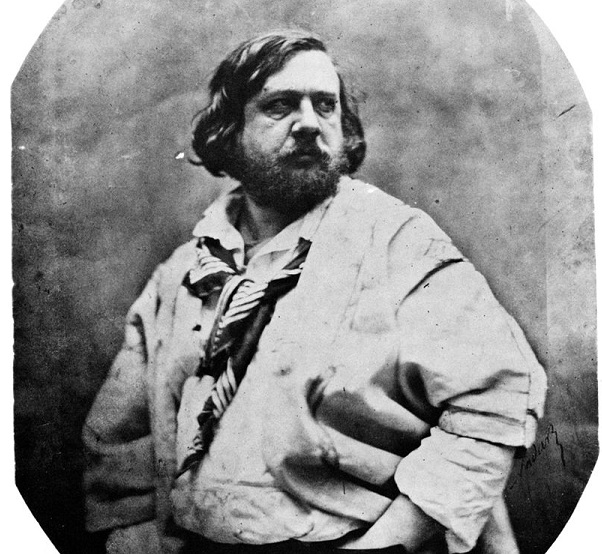
Théophile GAUTIER, Notre-Dame-de-Paris, 1834 / Paris-Les îles
Anonymous

Notre-Dame and the Seine go together. Only few portraits of one exist without mentioning the other, especially if the author allows himself some singularity. The long poem that Théophile Gautier (1811–1872) dedicates to the cathedral is one of these. Placing himself openly in the wake of the famous 1831 novel, the author apostrophises Victor Hugo (1802–1885) right from the beginning. For him, it is not only about doing in verse what another has already accomplished in prose. The aim is to reintegrate into this august stone house what, in Gautier’s eyes, is missing from his dear colleague’s cathedral: God, the soul, the poetry. In this context, it is normal to be seeing double, two cathedrals, because the fresh water of this poem reflects the already-old building.
« Pour me refaire au grand et me rélargir l’âme,
Ton livre dans ma poche, aux tours de Notre-Dame ;
Je suis allé souvent, Victor,
A huit heures, l’été, quand le soleil se couche,
Et que son disque fauve, au bord des toits qu’il touche,
Flotte comme un gros ballon d’or.
Tout chatoie et reluit ; le peintre et le poëte
Trouvent là des couleurs pour charger leur palette,
Et des tableaux ardents à vous brûler les yeux ;
Ce ne sont que saphirs, cornalines, opales,
Tons à faire trouver Rubens et Titien pâles ;
Ithuriel répand son écrin dans les cieux.
Cathédrales de brume aux arches fantastiques ;
Montagnes de vapeurs, colonnades, portiques,
Par la glace de l’eau doublés,
La brise qui s’en joue et déchire leurs franges,
Imprime, en les roulant, mille formes étranges
Aux nuages échevelés.
[…]
Que c’est grand ! que c’est beau ! les frêles cheminées,
De leurs turbans fumeux en tout temps couronnées,
Sur le ciel de safran tracent leurs profils noirs,
Et la lumière oblique aux arêtes hardies,
Jetant de tous côtés de riches incendies,
Dans la moire du fleuve enchâsse cent miroirs.
Comme en un bal joyeux, un sein de jeune fille,
Aux lueurs des flambeaux s’illumine et scintille
Sous les bijoux et les atours,
Aux lueurs du couchant, l’eau s’allume, et la Seine
Berce plus de joyaux, certes, que jamais reine
N’en porte à son col les grands jours. »
GAUTIER, Théophile. « Notre-Dame » [1834], Poésies diverses, 1833-1838, dans Œuvres de Théophile Gautier, Paris, Alphonse Lemerre, 1890, t. I, p. 299-300 et 302-303
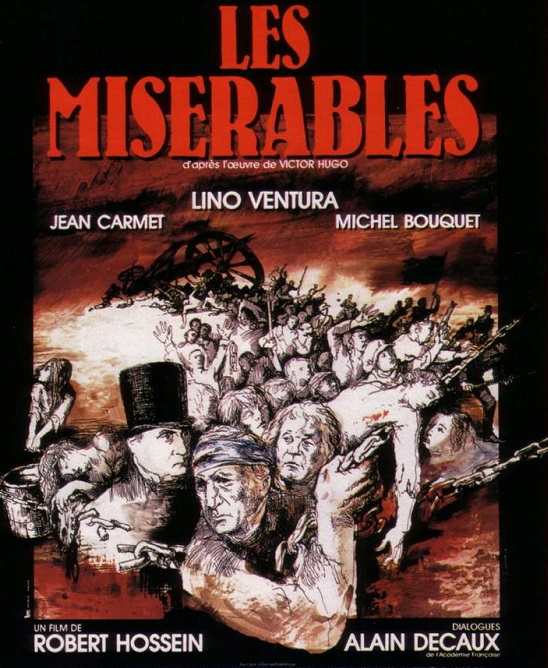
Victor HUGO, Les Misérables, 1862 / Paris-Les îles
Anonymous

Who does not remember Javert’s death? Defeated by Jean Valjean’s tremendous kindness, the unhinged detective sets off to the Seine by the shortest itinerary: like a waterdrop flowing to the riverbed. His beliefs waver, the situation is critical, he consults the current like an augur and comes to an extreme resolution. Victor Hugo (1802–1855), in this famous excerpt of Les Misérables (1862), constructs an impressive binary opposition system dominated by the antagonism of rigidity and fluidity, picturing the noble inner struggle of the strict but charismatic hero’s opponent.
« Jusqu’à ce jour, Javert n’avait pris, dans les deux attitudes de Napoléon, que celle qui exprime la résolution, les bras croisés sur la poitrine, celle qui exprime l’incertitude, les mains derrière le dos, lui était inconnue. Maintenant, un changement s’était fait ; toute sa personne, lente et sombre, était empreinte d’anxiété.
Il s’enfonça dans les rues silencieuses.
Cependant, il suivait une direction.
Il coupa par le plus court vers la Seine, gagna le quai des Ormes, longea le quai, dépassa la Grève, et s’arrêta, à quelque distance du poste de la place du Châtelet, à l’angle du pont Notre-Dame. La Seine fait là, entre le pont Notre-Dame et le Pont au Change d’une part, et d’autre part entre le quai de la Mégisserie et le quai aux Fleurs, une sorte de lac carré traversé par un rapide.
Ce point de la Seine est redouté des mariniers. Rien n’est plus dangereux que ce rapide, resserré à cette époque et irrité par les pilotis du moulin du pont, aujourd’hui démoli. Les deux ponts, si voisins l’un de l’autre, augmentent le péril ; l’eau se hâte formidablement sous les arches. Elle y roule de larges plis terribles ; elle s’y accumule et s’y entasse ; le flot fait effort aux piles des ponts comme pour les arracher avec de grosses cordes liquides. Les hommes qui tombent là ne reparaissent pas ; les meilleurs nageurs s’y noient.
Javert appuya ses deux coudes sur le parapet, son menton dans ses deux mains, et, pendant que ses ongles se crispaient machinalement dans l’épaisseur de ses favoris, il songea.
Une nouveauté, une révolution, une catastrophe, venait de se passer au fond de lui-même ; et il y avait de quoi s’examiner.
Javert souffrait affreusement.
[…]
Où en était-il ? Il se cherchait et ne se trouvait plus.
Que faire maintenant ? Livrer Jean Valjean, c’était mal ; laisser Jean Valjean libre, c’était mal. Dans le premier cas, l’homme de l’autorité tombait plus bas que l’homme du bagne ; dans le second, un forçat montait plus haut que la loi et mettait le pied dessus. Dans les deux cas, déshonneur pour lui Javert. Dans tous les partis qu’on pouvait prendre, il y avait de la chute. La destinée a de certaines extrémités à pic sur l’impossible, et au-delà desquelles la vie n’est plus qu’un précipice. Javert était à une de ces extrémités-là.
[…]
L’obscurité était complète. C’était le moment sépulcral qui suit minuit. Un plafond de nuages cachait les étoiles. Le ciel n’était qu’une épaisseur sinistre. Les maisons de la Cité n’avaient plus une seule lumière ; personne ne passait ; tout ce qu’on apercevait des rues et des quais était désert ; Notre-Dame et les tours du Palais de justice semblaient des linéaments de la nuit. Un réverbère rougissait la margelle du quai. Les silhouettes des ponts se déformaient dans la brume les unes derrière les autres. Les pluies avaient grossi la rivière.
L’endroit où Javert s’était accoudé était, on s’en souvient, précisément situé au-dessus du rapide de la Seine, à pic sur cette redoutable spirale de tourbillons qui se dénoue et se renoue comme une vis sans fin.
Javert pencha la tête et regarda. Tout était noir. On ne distinguait rien. On entendait un bruit d’écume ; mais on ne voyait pas la rivière. Par instants, dans cette profondeur vertigineuse, une lueur apparaissait et serpentait vaguement, l’eau ayant cette puissance, dans la nuit la plus complète, de prendre la lumière on ne sait où et de la changer en couleuvre. La lueur s’évanouissait, et tout redevenait indistinct. L’immensité semblait ouverte là. Ce qu’on avait au-dessous de soi, ce n’était pas de l’eau, c’était du gouffre. Le mur du quai, abrupt, confus, mêlé à la vapeur, tout de suite dérobé, faisait l’effet d’un escarpement de l’infini.
On ne voyait rien, mais on sentait la froideur hostile de l’eau et l’odeur fade des pierres mouillées. Un souffle farouche montait de cet abîme. Le grossissement du fleuve plutôt deviné qu’aperçu, le tragique chuchotement du flot, l’énormité lugubre des arches du pont, la chute imaginable dans ce vide sombre, toute cette ombre était pleine d’horreur.
Javert demeura quelques minutes immobile, regardant cette ouverture de ténèbres ; il considérait l’invisible avec une fixité qui ressemblait à de l’attention. L’eau bruissait. Tout à coup, il ôta son chapeau et le posa sur le rebord du quai. Un moment après, une figure haute et noire, que de loin quelque passant attardé eût pu prendre pour un fantôme, apparut debout sur le parapet, se courba vers la Seine, puis se redressa, et tomba droite dans les ténèbres ; il y eut un clapotement sourd, et l’ombre seule fut dans le secret des convulsions de cette forme obscure disparue sous l’eau. »
HUGO, Victor,Les Misérables [1862], texte annoté par Guy Rosa, Paris, Université Paris-Diderot, 2004, t. V, p. 238-253.
19th century | Novel, short story | In | Along

Honoré de BALZAC, Les Proscrits, 1831 / Paris-Les îles
Anonymous

When we think of Honoré de Balzac (1799–1850) and rivers, we commonly associate this inspiration with the Loire. However, La Comédie humaine bears some noteworthy references to the Seine, including two in Les Proscrits (1831). The first mention is from the very beginning, with the description of a tiny house located at the upstream tip of the Ile de la Cité, behind Notre-Dame (the book is set 1308), where the two “exiles” are staying, an old Mediterranean man (unnamed until the last page, when he is revealed as Dante Alighieri himself) and Godefroid, a young clerk from Flanders. The second reference can be located across from this place, on the left bank, at the end of Rue du Fouarre. From here, the two strangers cross the water once again, having attended a sermon given by Sigier, “the University of Paris most well-known doctor of mystic theology” (p. 91): an ideal conference to awaken the incredible charms of nature.
« Accompagnés par la foule qui, semblable à des courtisans autour de leurs rois, se pressait sur leurs pas, en laissant entre elle et ces trois personnages une respectueuse distance, Godefroid, le vieillard et Sigier marchèrent vers la rive fangeuse où dans ce temps il n’y avait point encore de maisons, et où le passeur les attendait. Le docteur et l’étranger ne s’entretenaient ni en latin ni en langue gauloise, ils parlaient gravement un langage inconnu. Leurs mains s’adressaient tour à tour aux cieux et à la terre. Plus d’une fois, Sigier à qui les détours du rivage étaient familiers, guidait avec un soin particulier le vieillard vers les planches étroites jetées comme des ponts sur la boue ; l’assemblée les épiait avec curiosité, et quelques écoliers enviaient le privilège du jeune enfant qui suivait ces deux souverains de la parole. Enfin le docteur salua le vieillard et vit partir le bateau du passeur.
Au moment où la barque flotta sur la vaste étendue de la Seine en imprimant ses secousses à l’âme, le soleil, semblable à un incendie qui s’allumait à l’horizon, perça les nuages, versa sur les campagnes des torrents de lumière, colora de ses tons rouges, de ses reflets bruns et les cimes d’ardoises et les toits de chaume, borda de feu les tours de Philippe-Auguste, inonda les cieux, teignit les eaux, fit resplendir les herbes, réveilla les insectes à moitié endormis. Cette longue gerbe de lumière embrasa les nuages. C’était comme le dernier vers de l’hymne quotidien. Tout cœur devait tressaillir, alors la nature fut sublime. Après avoir contemplé ce spectacle, l’étranger eut ses paupières humectées par la plus faible de toutes les larmes humaines. »
BALZAC, Honoré de. Les Proscrits [1831], dans Œuvres complètes de H. de Balzac, Paris, Alexandre Houssiaux, 1855, t. XVI, p. 97-99
19th century | Novel, short story | On

Félicité de GENLIS, “Massacre de la Saint Barthelemy”, 1816 / Paris-Les îles
Anonymous

On August 24, 1572, Paris turned into a mass grave when Catholics undertook the immolation of all the Huguenots of the city. Although there are many stories of the St Bartholomew’s Day massacre, of this terrible slaughter that lasted three days, the one by Félicité de Genlis (1746–1836) gives a striking image of the Seine River that has remained and that we find repeated throughout history, almost unchanged every time a collective ignominy strikes the City of Lights.
« […] On n’entendait que le bruit des coups de pistolets, d’arquebuses, celui des pierres et des cailloux lancés contre les vitres et les maisons et les cris, les gémissements des victimes, ou les blasphèmes, les imprécations et les hurlements des meurtriers. Les rues étaient jonchées de membres épars et sanglants ; les portes des maisons, des palais et des lieux publics, teintes de sang ; l’image de la mort et de la destruction se trouvait partout et sous les formes les plus hideuses ; on voyait des corps mutilés précipités du haut des toits, ou par les fenêtres, traînés ensuite dans la boue et dans les ruisseaux ensanglantés ; on rencontrait à chaque pas des charrettes chargées de butin ou de monceaux de cadavres qu’on allait jeter dans la Seine, dont les eaux furent, pendant plusieurs jours, souillées du sang humain, du sang des François !… On épuisa tous les genres de cruauté ; la faiblesse même de l’enfance ne préserva pas de la férocité : on vit des enfants de dix ans, dans le premier essai de l’homicide, commettre l’acte de la plus monstrueuse barbarie, en égorgeant des enfants au maillot ! […] Le marquis de Revel, fuyant en chemise jusqu’au bord de la Seine, et s’étant jeté dans un petit bateau, fut tué d’un coup d’arquebuse par son propre cousin Bussi d’Amboise.
Ce massacre mit en deuil presque toutes les familles distinguées de la France. »
GENLIS, Félicité de. « Massacre de la Saint-Barthélemy », Histoire de Henri le Grand, seconde édition, Paris, Maradan, 1816 [1815], t. I, p. 83-84.
19th century | Historiography | On | In | Along | Under
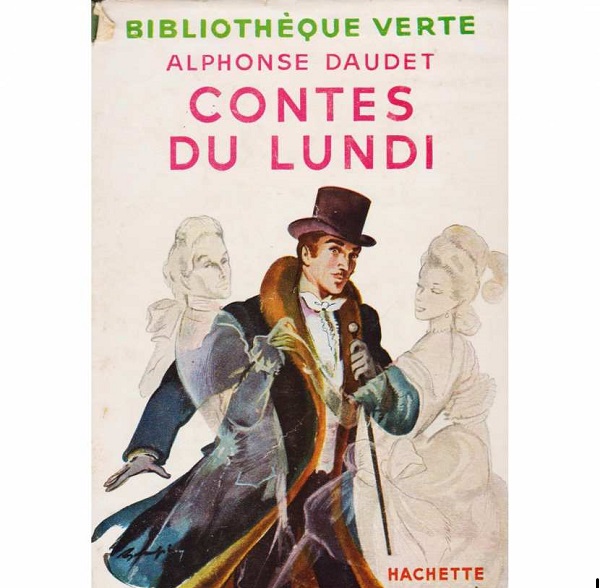
Alphonse DAUDET, « Un teneur de livres », 1871 / Paris-Les îles
Anonymous

From 1864 to 1912, the Mortuary was on the upstream point of the Île de la Cité, between the Pont Saint-Louis and the Pont de l’Archevêché, on the site formerly called “the Terrain” or “the Motte aux papelards” (Motta Papelladorum). Alphonse Daudet (1840–1897) invents the everyday life of a man working in this strange establishment in the short story “Un teneur de livres”, first published in Le Soir on September 19, 1871, then in the collection The Monday Tales (1873). The Seine, as we can guess, is a focal point of this small sanitary building which looks like a Roman temple; in Daudet’s short story, its role is increased, bringing a fantasy atmosphere to this naturalist story.
« Brr…, quel brouillard !… » dit le bonhomme en mettant le pied dans la rue. Vite, il retrousse son collet, ferme son cache-nez sur sa bouche, et la tête baissée, les mains dans ses poches de derrière, il part pour le bureau en sifflotant.
Un vrai brouillard, en effet. Dans les rues, ce n’est rien encore ; au cœur des grandes villes, le brouillard ne tient pas plus que la neige. […] Mais sur les quais encore déserts, sur les ponts, la berge, la rivière, c’est une brume lourde, opaque, immobile, où le soleil monte, là-haut, derrière Notre-Dame, avec des lueurs de veilleuse dans un verre dépoli.
Malgré le vent, malgré la brume, l’homme en question suit les quais, toujours les quais, pour aller à son bureau. Il pourrait prendre un autre chemin, mais la rivière paraît avoir un attrait mystérieux pour lui. C’est son plaisir de s’en aller le long des parapets, de frôler ces rampes de pierre usées aux coudes des flâneurs. À cette heure, et par le temps qu’il fait, les flâneurs sont rares. Pourtant, de loin en loin, on rencontre une femme chargée de linge qui se repose contre le parapet, ou quelque pauvre diable accoudé, penché vers l’eau d’un air d’ennui. Chaque fois l’homme se retourne, les regarde curieusement, et l’eau après eux, comme si une pensée intime mêlait dans son esprit ces gens à la rivière.
Elle n’est pas gaie, ce matin, la rivière. Ce brouillard qui monte entre les vagues semble l’alourdir. Les toits sombres des rives, tous ces tuyaux de cheminée inégaux et penchés qui se reflètent, se croisent et fument au milieu de l’eau, font penser à je ne sais quelle lugubre usine qui, du fond de la Seine, enverrait à Paris toute sa fumée en brouillard. Notre homme, lui, n’a pas l’air de trouver cela si triste. L’humidité le pénètre de partout, ses vêtements n’ont pas un fil de sec ; mais il s’en va tout de même en sifflotant avec un sourire heureux au coin des lèvres. Il y a si longtemps qu’il est fait aux brumes de la Seine ! Puis il sait que là-bas, en arrivant, il va trouver une bonne chancelière bien fourrée, son poêle qui ronfle en l’attendant, et la petite plaque chaude où il fait son déjeuner tous les matins. Ce sont là de ces bonheurs d’employé, de ces joies de prison que connaissent seulement ces pauvres êtres rapetissés dont toute la vie tient dans une encoignure.
« Il ne faut pas que j’oublie d’acheter des pommes », se dit-il de temps en temps, et il siffle, et il se dépêche. Vous n’avez jamais vu quelqu’un aller à son travail aussi gaiement.
Les quais, toujours les quais, puis un pont. Maintenant le voilà derrière Notre-Dame. À cette pointe de l’île, le brouillard est plus intense que jamais. Il vient de trois côtés à la fois, noie à moitié les hautes tours, s’amasse à l’angle du pont, comme s’il voulait cacher quelque chose. L’homme s’arrête ; c’est là.
On distingue confusément des ombres sinistres, des gens accroupis sur le trottoir qui ont l’air d’attendre, et, comme aux grilles des hospices et des squares, des éventaires étalés, avec des rangées de biscuits, d’oranges, de pommes. Oh ! les belles pommes si fraîches, si rouges sous la buée !… Il en remplit ses poches, en souriant à la marchande, qui grelotte, les pieds sur sa chaufferette ; ensuite il pousse une porte dans le brouillard, traverse une petite cour où stationne une charrette attelée.
« Est-ce qu’il y a quelque chose pour nous ? » demande-t-il en passant. Un charretier, tout ruisselant, lui répond :
« Oui, monsieur, et même quelque chose de gentil. »
Alors il entre vite dans son bureau.
C’est là qu’il fait chaud, et qu’on est bien. Le poêle ronfle dans un coin. La chancelière est à sa place. Son petit fauteuil l’attend, bien au jour, près de la fenêtre. Le brouillard en rideau sur les vitres fait une lumière unie et douce, et les grands livres à dos vert s’alignent correctement sur leurs casiers. Un vrai cabinet de notaire.
L’homme respire ; il est chez lui.
[…] Le fait est qu’on ne peut pas trouver un bureau plus gai, plus clair, mieux en ordre. Ce qu’il y a de singulier, par exemple, c’est ce bruit d’eau qu’on entend de partout, qui vous entoure, vous enveloppe, comme si on était dans une chambre de bateau. En bas, la Seine se heurte en grondant aux arches du pont, déchire son flot d’écume à cette pointe d’île toujours encombrée de planches, de pilotis, d’épaves. Dans la maison même, tout autour du bureau, c’est un ruissellement d’eau jetée à pleines cruches, le fracas d’un grand lavage. Je ne sais pas pourquoi cette eau vous glace rien qu’à l’entendre. On sent qu’elle claque sur un sol dur, qu’elle rebondit sur de larges dalles, des tables de marbre qui la font paraître encore plus froide.
Qu’est-ce qu’ils ont donc tant à laver dans cette étrange maison ? Quelle tache ineffaçable ?"
DAUDET, Alphonse. « Un teneur de livres » [1871], Contes du lundi, dans Œuvres d’Alphonse Daudet, Paris, A. Lemerre, 1880, p. 231-238.
19th century | Novel, short story | Along
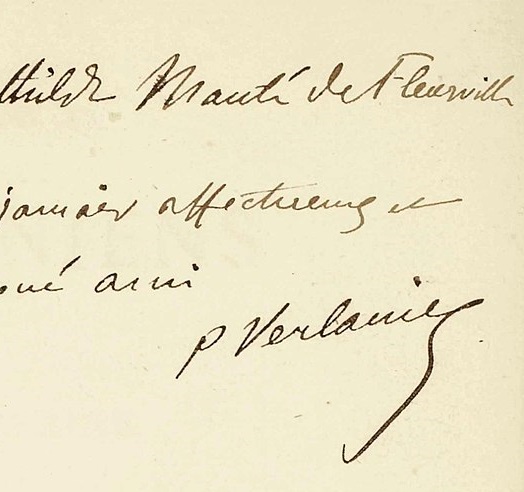
Paul VERLAINE, « Nocturne parisien », 1866 / Paris-Les îles
Anonymous

The dark, macabre and abject character of the Parisian river appears more often in prose than in poetry. This register is nonetheless adopted by Paul Verlaine (1844–1896) in one of the most memorable poems featuring the Seine. In Nocturne parisien (1866), one might say that misery and crime are as present as solitude and sadness. The poet invites us to share even the most jarring sounds of the Seine.
« Roule, roule ton flot indolent, morne Seine. —
Sous tes ponts qu’environne une vapeur malsaine
Bien des corps ont passé, morts, horribles, pourris,
Dont les âmes avaient pour meurtrier Paris.
Mais tu n’en traînes pas, en tes ondes glacées,
Autant que ton aspect m’inspire de pensées !
[…]
— Toi, Seine, tu n’as rien. Deux quais, et voilà tout,
Deux quais crasseux, semés de l’un à l’autre bout
D’affreux bouquins moisis et d’une foule insigne
Qui fait dans l’eau des ronds et qui pêche à la ligne.
Oui, mais quand vient le soir, raréfiant enfin
Les passants alourdis de sommeil ou de faim,
Et que le couchant met au ciel des taches rouges,
Qu’il fait bon aux rêveurs descendre de leurs bouges
Et, s’accoudant au pont de la Cité, devant
Notre-Dame, songer, cœur et cheveux au vent !
Les nuages, chassés par la brise nocturne,
Courent, cuivreux et roux, dans l’azur taciturne.
Sur la tête d’un roi du portail, le soleil,
Au moment de mourir, pose un baiser vermeil.
L’hirondelle s’enfuit à l’approche de l’ombre,
Et l’on voit voleter la chauve-souris sombre.
Tout bruit s’apaise autour. À peine un vague son
Dit que la ville est là qui chante sa chanson,
Qui lèche ses tyrans et qui mord ses victimes ;
Et c’est l’aube des vols, des amours et des crimes.
— Puis, tout à coup, ainsi qu’un ténor effaré
Lançant dans l’air bruni son cri désespéré,
Son cri qui se lamente et se prolonge, et crie,
Éclate en quelque coin l’orgue de Barbarie :
Il brame un de ces airs, romances ou polkas,
Qu’enfants nous tapotions sur nos harmonicas
Et qui font, lents ou vifs, réjouissants ou tristes,
Vibrer l’âme aux proscrits, aux femmes, aux artistes.
[…]
— Et puis l’orgue s’éloigne, et puis c’est le silence,
Et la nuit terne arrive, et Vénus se balance
Sur une molle nue au fond des cieux obscurs ;
On allume les becs de gaz le long des murs,
Et l’astre et les flambeaux font des zigzags fantasques
Dans le fleuve plus noir que le velours des masques ;
Et le contemplateur sur le haut garde-fou
Par l’air et par les ans rouillé comme un vieux sou
Se penche, en proie aux vents néfastes de l’abîme.
Pensée, espoir serein, ambition sublime,
Tout, jusqu’au souvenir, tout s’envole, tout fuit,
Et l’on est seul avec Paris, l’Onde et la Nuit !
— Sinistre trinité ! De l’ombre dures portes !
Mané-Thécel-Pharès des illusions mortes !
Vous êtes toutes trois, ô Goules de malheur,
Si terribles, que l’Homme, ivre de la douleur
Que lui font en perçant sa chair vos doigts de spectre,
L’Homme, espèce d’Oreste à qui manque une Électre,
Sous la fatalité de votre regard creux
Ne peut rien et va droit au précipice affreux ;
Et vous êtes aussi toutes trois si jalouses
De tuer et d’offrir au grand Ver des épouses
Qu’on ne sait que choisir entre vos trois horreurs,
Et si l’on craindrait moins périr par les terreurs
Des Ténèbres que sous l’Eau sourde, l’Eau profonde,
Ou dans tes bras fardés, Paris, reine du monde !
— Et tu coules toujours, Seine, et, tout en rampant,
Tu traînes dans Paris ton cours de vieux serpent,
De vieux serpent boueux, emportant vers tes havres
Tes cargaisons de bois, de houille et de cadavres ! »
VERLAINE, Paul, « Nocturne parisien », Poëmes saturniens, Paris, Alphonse Lemerre, 1866, p. 117-123.
19th century | Poems | On | Along
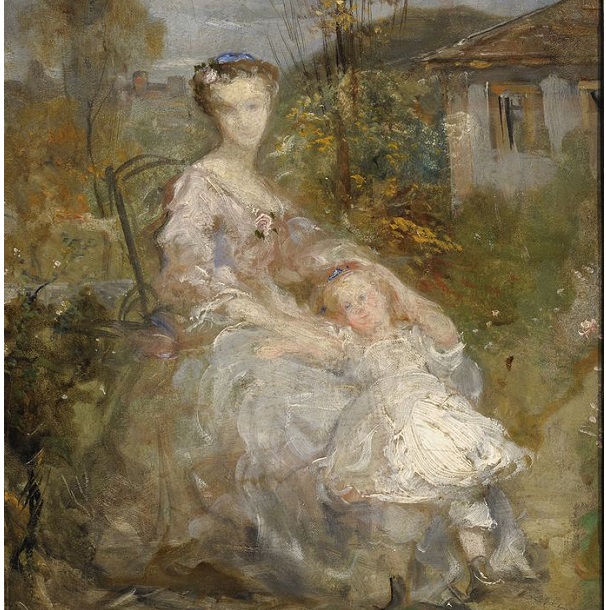
Louisa SIEFERT, Méline, 1876 / Paris-Les îles
Anonymous

What happens when, after having written so many verses, a hardened Parnassian poetess sets out to evoke the Parisian river in a work of prose? The example of Méline (1876), the first novel and last work published by Louisa Siefert (1845-1877) during her lifetime, is concise but gripping. The Seine is not liquid at all, as if the poetic side of the river, described as an engraving, outweighs the fictional mimesis. The narrator and her friend Claudien, who have walked from the area around the Jardin du Luxembourg down to the quays, see a kind of optical illusion which reminds them of the trompe l’oeil in the Venetian school movement. For us, this somewhat prefigures Huysmans (1848-1907) playing with patches of water in his writing a few years later (and a few quays below), in À vau-l’eau (1882).
« Nous enfilâmes un dédale de petites rues qui descendaient vers la Seine. La vue sur le quai était bizarre. Toutes les couleurs du ciel et du paysage s’étaient concentrées dans l’eau qui reflétait les objets comme un miroir de métal dépoli avec une netteté et une vivacité surprenantes. Je fis observer ce fait singulier à Claudien qui le compara aux effets d’optique que l’on voit à Venise et qu’on retrouve dans les tableaux de l’école. »
SIEFERT, Louisa, Méline, Paris, Lemerre, 1876, p. 28-29.
En ligne sur Gallica
19th century | Novel, short story | Along
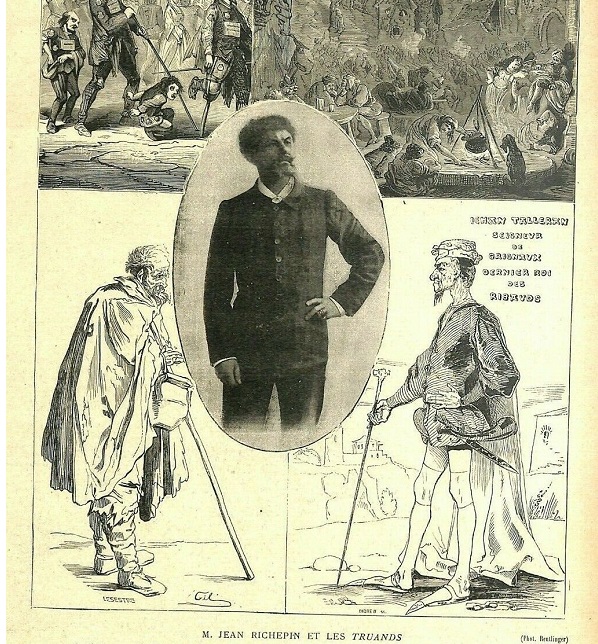
Jean RICHEPIN, Les Truands, 1899 / Paris-Les îles
Anonymous

The premiere of Jean Richepin’s (1849–1926) Les Truands took place on 22nd March 1899 at the Odéon theatre in Paris. Acts II, III and IV take place on the banks of the Seine in Paris, still sandy and wild, as it is set in 1447. With this historic drama in verse, the sulfurous author of La Chanson des gueux (1876) transports the boldness of his first collection in the Cour des Miracles of the Middle Ages, to the shadow of Victor Hugo’s Notre-Dame. The hero is named Robin Costeau, king of the mobsters, who hatched a plan to get himself a treasure; the scenic directions indicate where his wife and three accomplices are, while the rest of the gang is sent to the foot of the cathedral.
ACTE III
Le coup du trésor Notre-Dame
Sur la berge de la Seine, sous la première arche du pont de bois qui occupait à peu près l’emplacement du Pont-Marie aujourd’hui.
Cette arche et les suivantes, vues en perspective, vont de gauche à droite.
Par l’ouverture de l’arche, on aperçoit à l’horizon, encadrés ainsi, la pointe de la Cité et le chevet de Notre-Dame.
Tout le premier plan du théâtre représente la berge, sans quai. Au-delà, c’est la Seine, avec quelques gros chalands amarrés, sur la droite, le long de la terre.
A gauche, tout à fait au premier plan, escalier conduisant au tablier du pont.
Au lever du rideau, il fait encore un peu nuit, et le jour, ensuite, vient peu à peu.
SCÈNE PREMIÈRE
LE GOURET, DEUX TRUANDS,
MARION couchée et dormant au pied de l’escalier.
PREMIER TRUAND.
Alors, on n’est que trois au rendez-vous sous l’arche ?
LE GOURET, qui va et vient, l’air sombre.
Oui.
DEUXIÈME TRUAND.
Nous trois, pas plus ?
LE GOURET.
Non.
PREMIER TRUAND.
Ce n’est pas un gros tas.
LE GOURET.
Non.
DEUXIÈME TRUAND.
Et qu’a-t-on à faire ici ?
LE GOURET.
Marquer le pas.
PREMIER TRUAND, désignant le chevet de Notre-Dame.
Et les autres, ils font quelque chose là-bas ?
LE GOURET.
Je suppose.
DEUXIÈME TRUAND.
C’est bien toujours ce soir qu’on marche ?
LE GOURET.
Possible.
[…]
Enfin, tenez, l’affaire aujourd’hui qu’il engeance,
C’est bête à manger du foin !
Le trésor de Notre-Dame
Est gardé de près avec trop de soin,
Entre archers de la ville et sergents du vidame,
Pour espérer que sur-le-champ
On en sera le bon marchand !
MARION.
Va toujours, mon bonhomme, va crachant !
Robin ne la perd pas quand même, sa jugeotte.
Et grâce à lui, malgré tes pronostics fâcheux,
L’affaire ira dans la hotte.
[…]
LE GOURET, curieux.
Comment ?
ROBIN COSTEAU, à Gouret et aux deux truands.
Vous trois, allez donc par la berge
Jusqu’à l’endroit d’où l’on entend
Ce qui se passe dans l’auberge
De Tabuteux le Malcontent.
C’est là que la Mignote en dansant et chantant
Doit occuper les sergents du vidame.
Vous verrez s’ils sont bien en train.
Par contre, au large du chevet de Notre-Dame,
Si la Mignote chante en bateau son refrain,
Venez m’en avertir vite.
Ce serait signe qu’à la rescousse on m’invite
Et que les truands sont dans le pétrin.
[…]
SCÈNE VI
ROBIN COSTEAU, LA MIGNOTE à la cantonade.
(Robin Costeau semble dormir, absorbé dans sa pensée.)
LA MIGNOTE, à voix lointaine traînant sur l’eau.
C’est dans la ville de Bordeaux,
La mer est douce,
Chantez, mon mousse,
C’est dans la ville de Bordeaux
Qu’est arrivé trois grands bateaux.
Dans le troisième y a mes amours,
La mer est douce
Chantez, mon mousse,
Dans le troisième y a mes amours
Dans celui-là je vais toujours.
ROBIN COSTEAU, qui peu à peu est sorti de sa rêverie.
La voix !… Là-bas, sur l’eau !… C’est le signal d’alarmes.
Mon fils est donc en danger ?
Allons, vieux fou, rentre tes larmes !
Ce n’est pas à l’amour qu’il faut songer.
(Appelant vers l’autre côté de la Seine.)
Hé ! la Mignote !
(On voit au lointain passer rapidement une barque vide.)
Tiens ! Sa barque à la dérive !
Hé ! la Mignote !… Elle a donc débarqué ?
Mais en quel point ? Sur quelle rive ?
(Il regarde de tous côtés anxieusement.)
Ah ! par ici, sans doute !… L’autre quai
N’a pas de berge… Hé ! la Mignote !
LA MIGNOTE, à la cantonade.
J’arrive.
ROBIN COSTEAU, tombant affalé sur une pierre.
Ah ! pourvu que mon gas n’ait rien ! Mon Dieu ! Mon Dieu !
RICHEPIN, Jean, Les Truands : Drame en cinq actes, en vers, Paris, Fasquelle, 1899, p. 74-99.
En ligne
19th century | Play | Along
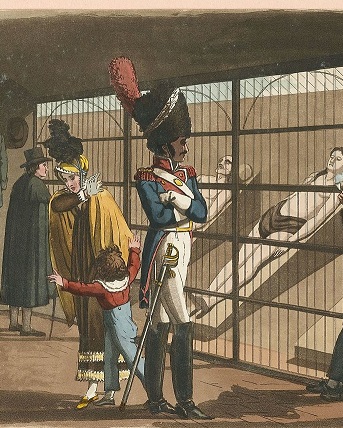
CHAMPFLEURY, « La Morgue », 1847 / Paris-Les îles
Anonymous

Dans sa nouvelle « La Morgue », extraite du recueil Chien-Caillou. Fantaisies d’hiver (1847), le critique d’art et romancier CHAMPFLEURY (Jules François Félix Husson, dit Fleury, dit Champfleury,1821-1889), dénonce en ces termes la pratique qui consistait, au XIXe siècle, à mettre en vitrine les cadavres de la morgue à Paris. À l’époque, l’institution loge sur l’île de la Cité, quai du marché neuf, avant d’être déplacée à la pointe amont de l’île. Quel qu’en soit l’emplacement exact, le spectacle qui s’y donne inspire aux écrivains une poétisation érotique du sordide : suivront dans cette veine entre autres Zola (Thérèse Raquin, 1867) et Daudet (« Un teneur de livres », 1871).
« Un bâtiment bourgeois et carré qui baigne ses pieds dans la Seine, - voilà la Morgue au dehors.
Huit lits de pierre, huit cavaliers dessus, voilà la Morgue au dedans.
La Morgue aime la Seine, car la Seine lui fournit des épaves humaines.
Ce qu’elles consomment à elles deux, ces terribles receleuses, on l’ignore ; mais le nombre en est grand.
Elles ne tiennent pas à avoir des amants beaux et coquets, roses et blonds. Ouich ! Elles veulent la quantité.
Aussi la Morgue s’entend-elle avec la Seine pour défigurer les hommes, afin de les garder le plus longtemps possible.
Ce n’est pas dans Paris que la Seine est une gaie rivière, et il faut marcher loin pour retrouver les bords fleuris de madame Deshoulières.
La Seine de Paris est une rivière fétide, verte l’été, jaune l’hiver, obscure comme une chambre noire.
Quand la Seine empoigne un homme, elle vous le prend au collet comme un sergent de ville et l’emmène dans son lit. Les matelas de ce lit sont rembourrés de tessons de bouteilles, de bottes moisies, de clous rouillés, de chiens et de chats sans poils, enfin la quintessence des immondices de Paris, la ville aux immondices.
La Seine est capricieuse comme une femme ; elle a des fantaisies. Elle garde son nouvel amant quelquefois un jour, quelquefois une semaine, quelquefois un mois, selon que le cavalier lui plaît. Puis, fatiguée, elle le lâche en le parant de ses couleurs. Il revient vert ou jaune.
Alors la Morgue ouvre ses grands bras et s’empare des restes de la Seine. Elle commence par ôter au cavalier ses habits qui pleurent.
Elle l’étend sur un lit de pierre après l’avoir bien nettoyé, bien lavé, bien ficelé, disent quelques-uns.
Et tous les jours la Morgue ouvre ses portes au public. Elle ne craint pas, l’impudique, d’accuser le nombre de ses amants.
La foule, gourmande d’émotions, y court ; surtout les femmes. Par hasard j’entrai un jour.
Sur un lit était étendu un vieillard que la Seine avait teinté de rose. Les cheveux étaient blancs, rares et hérissés. Sur la poitrine se dressaient quelques poils, blancs et rares aussi. Le ventre était gonflé sous le masque de cuir, -qui est la feuille de vigne de la Morgue.
Parmi les curieux se trouvait une femme portant dans ses bras un enfant. La femme aurait voulu avoir dix yeux pour voir. L’enfant sommeillait. - Eh ! petit, dit la mère en montrant du doigt le vieillard plus terrible que la plus terrible toile espagnole, regarde donc, vois-tu le beau monsieur ? »
Champfleury, « La Morgue », Chien-Caillou, Fantaisies d’hiver, Paris, Martinon, 1847, p. 115-118.
En ligne
19th century | Novel, short story | In | Along
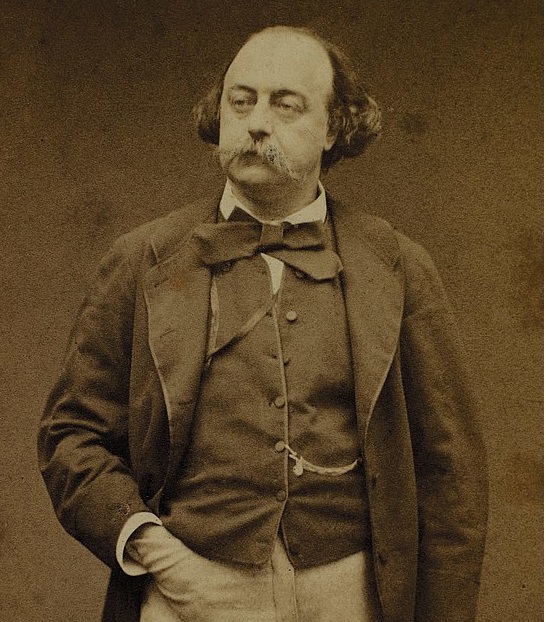
Gustave FLAUBERT, Un parfum à sentir, 1836 / Paris-Les îles
Anonymous

Marguerite staggers out of the hospital, her clothes are ripped; she looks pathetic. Rejected by her company, downgraded by a younger rival, thrown into a lion’s cage, the miserable entertainer aimlessly drags her scratches and her broken leg around Paris for two days, without eating, passers-by scorning her, local children booing her. Here is the conclusion of a short novel conceived and written by Gustave Flaubert (1821–1880) in eight days, as he said (p. 107), at fourteen years old.
« Elle s’arrêta, se frappa le Front.
— La mort ! dit-elle en riant.
Et elle se dirigea à grands pas vers la Seine.
XII
On venait de retirer un cadavre de l’eau, et il était exposé à la morgue ; c’était une femme, un bonnet de dentelle avec des fleurs sales lui couvraient la tête, ses habits étaient déchirés et laissaient voir des membres amaigris ; quelques mouches venaient bourdonner à l’entour et lécher le sang figé sur sa bouche entr’ouverte, ses bras gonflés étaient bleuâtres et couverts de petites taches noires.
Le soleil était sur son déclin et un de ses derniers rayons, perçant à travers les barreaux de la morgue, vint frapper sur ses yeux a moitié fermés et leur donner un éclat singulier.
Ce corps couvert de balafres, de marques de griffes, gonflé, verdâtre, déposé ainsi sur la dalle humide, était hideux et faisait mal à voir. L’odeur nauséabonde qui s’exhalait de ce cadavre en lambeaux, et qui faisait éloigner tous les passants oisifs, attira deux élèves en médecine."
FLAUBERT, Gustave, Un parfum à sentir, ou Les Baladins [1836], Œuvres de jeunesse inédites, Paris, Louis Conard, 1910, t. I, p. 105-106
En ligne
19th century | Novel, short story | In | Under
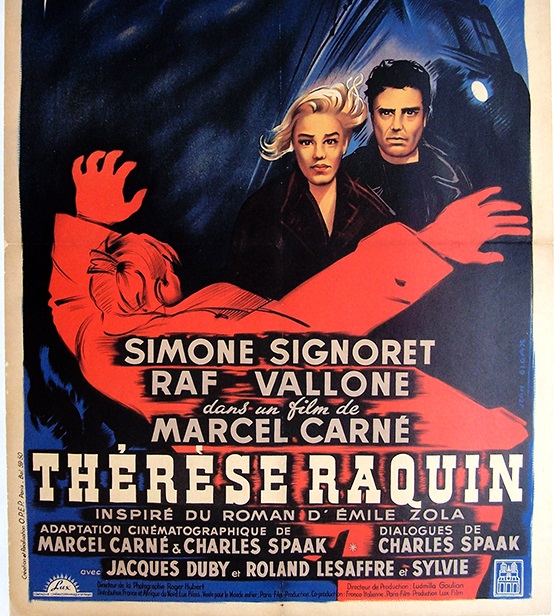
Émile Zola, Thérèse Raquin, 1867 / Paris-Les îles
Anonymous

All three born and raised in Vernon, a river city halfway between Paris and Rouen, the main characters from the novel Thérèse Raquin (1867) maintain a special relationship with the Seine. Thérèse lived her best moments playing one-on-one with “the White River” she was “looking at defiantly”, imagining she was struggling against the swells (p. 23); later, “crushed, stupefied” by a bad marriage with her cousin, she would seriously consider “throwing herself in the river one day” (p. 59). It is by “looking at the Seine flowing with an absorbed look on his face” (p. 51) that Laurent decided to kiss his childhood friend’s wife and, again, it is while he “is still looking at the river flowing with a stupid look on his face” (p. 93) that the dwell inspires him to get rid of the bothersome husband. The poor victim is not outdone in this novel that Émile Zola (1840–1920) set entirely around the Seine. Although he remains “awfully afraid of water” (p. 96), Camille loves to walk along the left bank; when seen from the safety provided by the quays, the river provides to the future drowned man from Saint-Ouen a varied and ever-renewed show.
« Camille resta un mois sans pouvoir trouver un emploi. Il vivait le moins possible dans la boutique, il flânait toute la journée. L’ennui le prit à un tel point, qu’il parla de retourner à Vernon. Enfin, il entra dans l’administration du chemin de fer d’Orléans. Il gagnait cent francs par mois. Son rêve était exaucé.
Le matin, il partait à huit heures. Il descendait la rue Guénégaud et se trouvait sur les quais. Alors, à petits pas, les mains dans les poches, il suivait la Seine, de l’Institut au Jardin des Plantes. Cette longue course, qu’il faisait deux fois par jour, ne l’ennuyait jamais. Il regardait couler l’eau, il s’arrêtait pour voir passer les trains de bois qui descendaient la rivière. Il ne pensait à rien. Souvent il se plantait devant Notre-Dame, et contemplait les échafaudages dont l’église, alors en réparation, était entourée ; ces grosses pièces de charpente l’amusaient, sans qu’il sût pourquoi. Puis, en passant, il jetait un coup d’œil dans le Port aux Vins, il comptait les fiacres qui venaient de la gare. Le soir, abruti, la tête pleine de quelque sotte histoire contée à son bureau, il traversait le Jardin des Plantes et allait voir les ours, s’il n’était pas trop pressé. Il restait là une demi-heure, penché au-dessus de la fosse, suivant du regard les ours qui se dandinaient lourdement ; les allures de ces grosses bêtes lui plaisaient ; il les examinait, les lèvres ouvertes, les yeux arrondis, goûtant une joie d’imbécile à les voir se remuer. Il se décidait enfin à rentrer, traînant les pieds, s’occupant des passants, des voitures, des magasins. »
ZOLA, Émile, Thérèse Raquin [1867], deuxième édition, Paris, A. Lacroix, Verboeckhoven, 1868, p. 31-32.
En ligne
19th century | Novel, short story
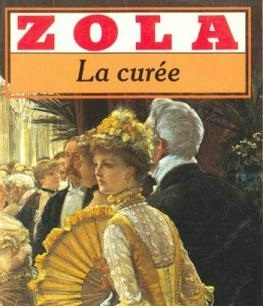
Émile ZOLA, La Curée, 1871 / Paris-Les îles.
Anonymous

The first great Sequani description in the twenty volumes of the Rougon-Macquart (1871–1893) is the one that the narrator portrays from the point of view of Renée in The Rush for the Spoil (1871). A child discovers, from the high-perched windows of a private mansion on the Quai de Béthune, “all that district of Paris which extends from the Cité to the Pont de Bercy” (p. 93). The Seine depicted as a woman caressing the Île Saint-Louis is not naked like the giantess from the Flowers of Evil (1857). Even though she is obediently dressed in her elegant dresses, she is for Renée a powerful and troubling friend, because she encourages lust. Here, just like anywhere in the work of Émile Zola (1840–1902), the depiction of the river is as erotic as it is aesthetical.
« Mais l’âme de tout cela, l’âme qui emplissait le paysage, c’était la Seine, la rivière vivante ; elle venait de loin, du bord vague et tremblant de l’horizon, elle sortait de là-bas, du rêve, pour couler droit aux enfants, dans sa majesté tranquille, dans son gonflement puissant, qui s’épanouissait, s’élargissait en nappe à leurs pieds, à la pointe de l’île. Les deux ponts qui la coupaient, le pont de Bercy et le pont d’Austerlitz, semblaient des arrêts nécessaires, chargés de la contenir, de l’empêcher de monter jusque dans la chambre. Les petites aimaient la géante, elles s’emplissaient les yeux de sa coulée colossale, de cet éternel flot grondant qui roulait vers elles, comme pour les atteindre, et qu’elles sentaient se fendre et disparaître à droite et à gauche, dans l’inconnu, avec une douceur de titan dompté. Par les beaux jours, par les matinées de ciel bleu, elles se trouvaient ravies des belles robes de la Seine ; c’étaient des robes changeantes qui passaient du bleu au vert, avec mille teintes d’une délicatesse infinie ; on aurait dit de la soie mouchetée de flammes blanches, avec des ruches de satin ; et les bateaux qui s’abritaient aux deux rives la bordaient d’un ruban de velours noir. Au loin, surtout, l’étoffe devenait admirable et précieuse, comme la gaze enchantée d’une tunique de fée ; après la bande de satin gros vert, dont l’ombre des ponts serrait la Seine, il y avait des plastrons d’or, des pans d’une étoffe plissée couleur de soleil. Le ciel immense, sur cette eau, ces files basses de maisons, ces verdures des deux parcs, se creusait.
Parfois Renée, lasse de cet horizon sans bornes, grande déjà et rapportant du pensionnat des curiosités charnelles, jetait un regard dans l’école de natation des bains Petit, dont le bateau se trouve amarré à la pointe de l’île. Elle cherchait à voir, entre les linges flottants pendus à des ficelles en guise de plafond, les hommes en caleçon dont on apercevait les ventres nus. »
ZOLA, Émile, La Curée [1872], Paris, G. Charpentier et E. Fasquelle, 1895, p. 115-116.
En ligne
19th century | Novel, short story | On | In | Along | Under
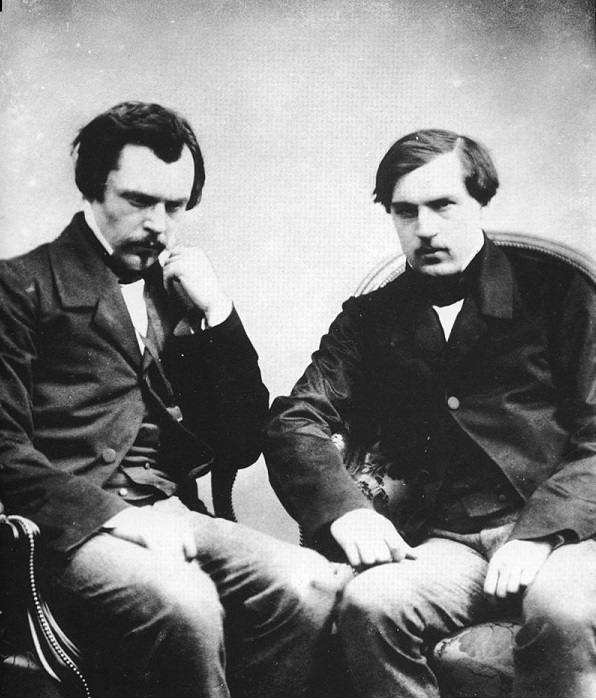
Jules et Edmond de GONCOURT, « Un aquafortiste », 1856 / Paris
Anonymous

One of the most beautiful texts written by the “artist” pen of the Goncourt brothers is “Un aquafortiste,”, a fantasy short story first published in 1856 in L’Artiste under the title of “Feu M. Thomas”. Edmond (1822–1896) and his younger brother Jules (1830–1870) depict the Seine during night-time, as seen through the exalted eyes of an aquafortist modelled on Charles Meryon (1821–1868). After an evening involving alcohol and spent “in a small bedroom on Rue de l’Ancienne-Comédie” (a nod to the Dagneau restaurant, patronised by the great names of Romanticism), the staggering hero accepts a proposal from an onlooker—the narrator—who kindly offers to bring him home. Strolling along the riverside, the artist sets out with verve to show, for the greatest benefit of his companion (and the reader), the still pre-Haussmann-style Paris, “lugubriously splendid,” caught in the act of beauty.
« La nuit ! voilà la reine des eaux-fortes ! Cela fait du noir où il y a des choses. Avez-vous remarqué comme les fleuves sont grands la nuit ? Paris qui dort, les pieds dans l’eau, c’est beau, beau, bien beau ! Un flot d’ombre éclaboussé de gaz ! L’eau, — une huile, du bleu, du noir, du violet, de l’or ! du neutre — la teinte moiré de feu ; un miroir qui pêle-mêle roule les ténèbres et les éclairs ! — Le ciel est pâle, ce soir. — Près du pont, le remous, voyez donc ! de l’argent bleu !… mille lucioles… cela grouille… et la berge aux grandes pierres blanches qui entre dans le trou noir de l’arche comme un mitron se glissant dans un four éteint… Ces réverbères, dans l’eau tout là-bas, — des crucifix de feu ; là, devant nous, comme des pans de fenêtres d’où les flammes des lustres filtrent à travers les rideaux de bal… Non, cela tourne : des colonnes torses qui remuent de la braise dans l’inconnu mort de l’eau ; non, cela n’est pas cela, c’est autre chose… Est-ce bête, les phrases !… Toutes ces masses, un gribouillis d’encre avec des gris blafards comme il y en a sur les ailes des chauves-souris. […] Ah ! Ah ! Nous voilà en face de la rue de Jérusalem… Quelque jour — il faut que je me presse, car les maçons… je sauverai ce motif-là. Ces deux grosses boules qui trempent, croiriez-vous que ce sont les deux arbres sans feuilles au bas du quai ? une fière estompe, à ces heures-ci, dans le dessin de toutes choses !… La tourelle, oui, avec ces deux fonds d’ombre à droite et à gauche, la petite flèche de la Sainte-Chapelle, — voilà ! Et là-dessous, penchez-vous, il faudra que j’agrandisse et que j’allonge, à la façon de l’eau morne, la face des maisons éteintes, comme les perspectives des maladreries blêmes. Ça ? des fenêtres de blanchisseuses ; on dirait des yeux éclairés de vert-de-gris… Toujours Notre-Dame ! avec comme des marches dans le haut ; un escalier vers l’infini, cassé à moitié du ciel… Ah ! c’est drôle, l’arche du pont Saint-Michel et l’ombre portée : un cerceau tout noir où ainsi qu’un clown saute la lumière ! — Regardez bien : tout derrière une maison peinte en rouge, aux fenêtres de feu, et mille petites maisons blanches ; devant, le quai, une maison carrée, cinq trous dans le mur, un gros tuyau noir au milieu du toit, du gris, du sale au bas de la maison, — voilà tout ce que c’est que la Morgue ! Il n’y a pas à en dire plus que la chose ! C’est simple comme bonjour ! — Cette grande chose sombre en bas, c’est un bateau, tout bonnement. Essayez donc de peindre la noyade là-dedans ! Je sais cela d’expérience : il n faut pas mettre sa tête dans sa main. Les choses ne prêchent, ni ne pleurent, ni ne rêvent, ni se souviennent. Les chefs-d’œuvre ne doivent pas parler ; il n’y a que quelques sots comme moi… Ah ! des crêtes, des toits, des dômes de saphir : la lune s’est levée. Après tout il y a des gens qui la font très bien avec un pain à cacheter… — Et l’Hôtel-Dieu, ce n’est qu’une caserne ! Une, deux, trois, quatre, cinq, six, sept, huit, neuf, dix, quinze… quarante-cinq… — je compte les fenêtres : une manie !… — sur cinq rangées, cela fait…
Quand il eut passé Notre-Dame, il s’assit sur le parapet. Nous regardions par-derrière la basilique noire accroupie sur la ville bleue, avec ses deux tours levées sur l’orbe d’argent, comme un sphinx de basalte à deux énormes têtes. »
GONCOURT, Edmond et Jules, « Un aquafortiste » [1856], Quelques créatures de ce temps, nouvelle édition, Paris, G. Charpentier, 1878, np.
En ligne
19th century | Novel, short story | Along
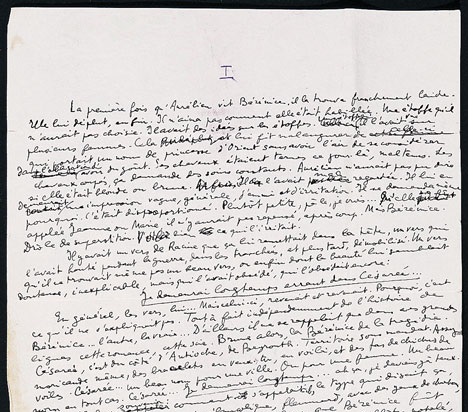
Louis ARAGON, Aurélien, 1944 / Paris-Les îles
Anonymous

In 1944, Louis Aragon (1897–1982) published the novel that established the unknown woman of the Seine as an unmissable myth of the Parisian landscape. An ambiguous work, the subject of which is the feeling of world-weariness in the context of the interwar period, Aurélien tells the poetic tale of a man’s love for a woman who reminds him of the drowned lady whose death mask hangs on display at his home. It was fashionable for Parisian artists, Bohemians and the middle-class of the roaring twenties to hang the tentative smile of the woman Albert Camus (1913–1960) called “the drowned Mona Lisa” in their sitting rooms or bedrooms. Overwhelmed by the four years he spent on the frontline, Aurélien lives on the fourth floor of a building looking out onto the downstream end of Île Saint-Louis: the water beneath him becomes this “blue blood” that “always, always speaks of suicide” (p. 97). And if the “veiny M of the Seine” is that of the knee (p. 97), it points towards the old location of the Morgue close by, the place where the haunting stranger was discovered.
« On ne sait rien d’elle… une inconnue… qui s’est jetée dans la Seine, une jeune femme, elle a fermé les yeux sur son secret… pourquoi a-t-elle fait ça ? La faim, l’amour… On peut rêver ce qu’on veut… Qu’est-ce qui a poussé le carabin de service, là, à côté, à la Morgue, à prendre le moulage de cette noyée-là, et pas d’une autre… Il avait dû la trouver très belle, lui… Il ne lui a pas semblé possible de la laisser partir comme ça, sur les amphithéâtres de la Faculté de Médecine. »
ARAGON, Louis, Aurélien [1944], Paris, ©Gallimard, 1978, p. 227. www.gallimard.fr
20th century | Novel, short story | In | Under
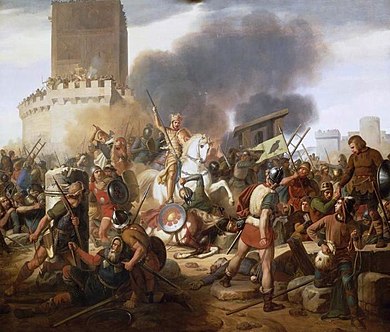
ABBON DE SAINT GERMAIN, Le Siège de Paris par les Normands, v. 880 / Paris-Les îles
Anonymous

Le Siège de Paris par les Normands est l’œuvre d’un témoin direct des incursions vikings au IXe siècle. Abbon de Saint-Germain-des-Prés (v. 850-923) est moine et assiste à l’arrivée des Normands. Dans un poème constitué de trois livres, il relate notamment la crue de la Seine à Lutèce en 886. Son récit rappelle l’importance de ce fleuve, à la fois nécessaire à la vie du territoire et voie d’invasions privilégiée
"Ô douleur! voilà tout-à-coup que pendant le silence de la nuit le milieu du pont s’écroule, entraîné par la colère des ondes furieuses, qui s’enflent et débordent. La Seine, en effet, avait étendu de tous côtés les limites de son humide empire, et couvrait les vastes plaines des débris du pont, qui, du côté du midi, ne portait que sur un point où le fleuve s’abîme dans un gouffre ; il n’en fut pas de même de la citadelle qui, bâtie sur une terre appartenant au bienheureux Saint Germain, resta debout sur ses fondements. L’un et l’autre tenaient au reste au côté droit de la cité de Paris. Aussitôt que le jour se lève, les cruels Danois se lèvent aussi, montent sur leurs vaisseaux, les remplissent d’armes et de boucliers, passent la Seine, cernent la malheureuse tour, et l’assaillent à plusieurs reprises de grêles de traits. La ville tremble, les clairons sonnent, les larmes inondent les murs, la terre gémit, et l’onde lui répond par des mugissements, les pierres et les dards se croisent dans l’air qu’ils obscurcissent."
"Proh dolor! en medius cecidit pons nocte silenti,
Obsitus alluviis tumida bachantibus ira.
Nam sparsim Sequana circumfudit sua regna,
Exuviisque suis obtexerat aequora campum.
Australis gestabat eum vertex, sed et arcem
Quae tellure manet Sancti fundata boati .
Urbis inherebant dextris, alter sed et altri. .
Mane quidem surgente Dani surgunt simul acres,
Atque rates subeunt, armis onerant clipeisque,
Transque natant Sequanam, turrim cinguntque
misellam.
Multa dabant illi densis certamina telis.
Urbs tremuit, lituique boant, lacrimisque rigantur
Moenia, rusque gemit totum, pelagusque
remugit.
Aera circumeunt lapides et spicula mixtim."
Abbon de Saint-Germain-des-Prés, Le Siège de Paris par les Normands 885-892, Paris, Paleo, 2002, p. 50
L’édition de 1886 Le Siège de Paris par les Normands, en 885-886. Poème d’Abbon est consultable sur
Gallica
The middle ages | Historiography | On | Along

Grégoire DE TOURS, Historia Francorum, 591 / Paris-Les îles
Anonymous

L’Histoire des Francs (Historia Francorum), à l’origine nommée Decem libri historiarum, est un ouvrage retraçant l’histoire de l’Occident et de l’Église depuis la genèse jusqu’à l’an 591. Mais son auteur, Grégoire de Tours, évêque et historien du VIe siècle concentre une grande part de son œuvre à son époque et à sa région : la Gaule mérovingienne. S’y succèdent des invasions, des luttes intestines et les alliances, des trêves et des massacres.
« La huitième année du roi Childebert, la veille des calendes de février (31 janvier), un dimanche alors que dans la ville de Tours la cloche avait été mise en branle pour les matines et que la population se levait pour se rassembler à l’église sous un ciel nuageux et pluvieux, un grand globe de feu tombé du ciel parcourut dans l’air un grand espace en donnant une telle lumière qu’on distinguait tout comme à midi. Il rentra à nouveau dans le nuage et la nuit succéda. Les cours des eaux débordèrent d’une manière insolite ; c’est ainsi que la Seine et la Marne provoquèrent une telle inondation autour de Paris que souvent des naufrages se produisirent entre la cité et la basilique de Saint-Laurent. »
Grégoire de Tours, Histoire des Francs / traduction de Robert Latouche, Paris, Les Belles Lettres, 2005, Livre IV, p. 237
The middle ages | Historiography | On | Along
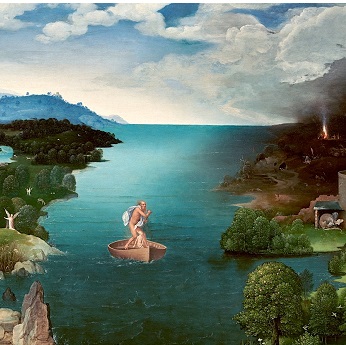
Théophile de VIAU, « La frayeur de la mort », 1621 / Paris-Les îles
Anonymous

Has the uncompromising Charon ever sailed on the Seine? As Théophile de Viau (1590–1626) was a condemned man, to him the river that borders the bank where executions take place in Paris can only be the Acheron. The criminal we meet in this poem is indeed the author who is accused of unbelief, persecuted for libertinism, and sentenced to death for having signed licentious verses. However, the river of the dead runs at the foot of the gallows. The baroque intensity of these stanzas is largely due to the funnelling effect orchestrated by the poet: there is a quick shift from the general to the particular, from the abstract to the tangible and from myth to reality. It tightens like a running knot.
« La frayeur de la mort esbranle le plus ferme ;
Il est bien mal-aisé
Que, dans le desespoir et proche de son terme,
L’esprit soit appaisé.
L’ame la plus robuste et la mieux preparée
Aux accidens du sort,
Voyant auprès de soy sa fin toute asseurée,
Elle s’estonne fort.
Le criminel pressé de la mortelle crainte
D’un supplice douteux
Encore avec espoir endure la contrainte
De ses liens honteux.
Mais, quand l’arrest sanglant a resolu sa peine
Et qu’il voit le bourreau,
Dont l’impiteuse main luy detache une chaine
Et luy met un cordeau,
Il n’a goutte de sang qui ne soit lors glacée ;
Son ame est dans les fers ;
L’image du gibet luy monte à la pensée,
Et l’effroy des enfers.
L’imagination de cet objet funeste
Luy trouble la raison,
Et, sans qu’il ait du mal, il a pis que la peste
Et pis que le poison.
Il jette malgré luy les siens dans sa destresse
Et traine en son malheur
Des gens indifferens, qu’il voit parmy la presse
Pasles de sa douleur.
Par tout dedans la Greve il voit fendre la terre ;
La Seine est l’Acheron ;
Chaque rayon du jour est un traict de tonnerre,
Et chaque homme Charon.
La consolation que le prescheur apporte
Ne luy faict point de bien,
Car le pauvre se croit une personne morte,
Et n’escoute plus rien.
Les sens sont retirez, il n’a plus son visage,
Et, dans ce changement,
Ce seroit estre fol de conserver l’usage
D’un peu de jugement.
La nature, de peine et d’horreur abbatue,
Quitte ce malheureux ;
Il meurt de mille morts, et le coup qui le tue
Est le moins rigoureux. »
En français modernisé :
"La peur de la mort ébranle le plus ferme ;
Dans le désespoir et proche de sa fin,
L’esprit ne peut absolument pas être apaisé.
L’âme la plus robuste et la mieux préparée
Aux accidents du sort,
S’étonne pourtant fort,
Quand elle arrive près de la fin.
Le criminel, oppressé par la crainte insoutenable,
D’être soumis au pire supplice,
Supporte pourtant d’être pieds et poings liés,
Car il garde l’espoir de survivre.
Mais, quand la peine est prononcée,
Et qu’il voit le bourreau,
D’une main impitoyable le détacher pour lui mettre la corde au cou,
Tout son sang se glace,
Son âme est enchaînée ;
L’image de la potence envahit ses pensées,
Et avec elle, la peur de l’Enfer.
L’image de cet objet funeste
Lui trouble la raison,
Et, alors qu’il n’est pas malade, il est dans un état pire que s’il avait la peste,
Ou que s’il avait été empoissonné.
Malgré lui, il entraîne ses proches dans sa détresse,
Et même la foule, qu’il ne connaît pas,
Est touchée par sa douleur.
Partout, la terre se fend des cris de ses souffrances,
La Seine est l’Acheron,
Chaque rayon du jour est un éclair du tonnerre,
Et chaque homme se nomme Charon.
La consolation que le prêcheur apporte,
Ne lui est d’aucun secours,
Car le pauvre se croit déjà mort,
Et n’écoute plus rien.
Tous ses sens l’ont quitté, il n’a plus de visage,
Et, dans cet état,
Il serait fou de conserver l’usage
De la raison.
La nature, de peine et d’horreur abattue,
Quitte ce malheureux,
Il meurt de mille morts, dont le délivre,
Le dernier coup qui le tue."
VIAU, Théophile de. « Stances : La frayeur de la mort esbranle le plus ferme » [1621], Œuvres complètes de Théophile, nouvelle édition, revue, annotée et précédée d’une notice biographique par M. Alleaume de Cugnon, Paris, P. Jannet, 1856, t. I, p. 211-212.
Consultable en ligne
16th-17th century | Poems | Along
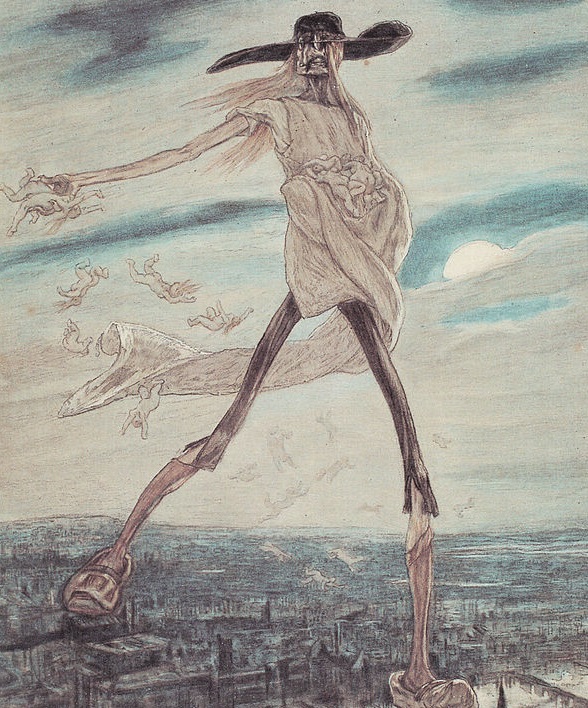
Joris-Karl HUYSMANS, Félicien Rops et son œuvre, 1897 / Paris
Anonymous

En 1889, Joris-Karl Huysmans (1848-1907), romancier et critique d’art, commente l’eau-forte "Satan semant l’ivraie" (1882) du peintre symboliste Félicien Rops (1833-1898). Celle-ci, appartenant à la série des Sataniques, représente la Seine à Paris et le vice répandu sur ses bords. L’esprit décadent transfigure ici son horreur de la femme par le recours au mythe populaire. La récupération du sel misogyne des Saintes Écritures accouplé au levain fin-de-siècle offre, sous le pinceau du peintre, la vision d’un Satan modernisé. Le résultat est un cauchemar des plus saisissants. Mais c’est le travail de l’écrivain qui, par sa puissance d’évocation, doit retenir l’attention ; il s’agit de recréer l’image picturale par l’usage de la simple plume. Remarquons en particulier l’eau de riz, les larves : lexique de la blancheur gluante, mucilagineuse, cher à Huysmans dès À vau-l’eau (1882), roman qui date de la même année que la planche de Rops.
« La nuit, au-dessus de Paris qui dort, un semeur immense emplit le ciel ; ses pieds, chargés de pesants sabots, posent sur les toits de la rive droite et sur le sommet des tours de Notre-Dame. Sous l’arche dessinée par ses maigres jambes, la Seine roule comme une eau de riz que glace la lune dont le disque semble excorié par la fumée des nues. D’un bras, Satan relève son tablier dans lequel des larves de femmes grouillent et, de l’autre, il fauche le firmament d’un geste qui lance, à toute volée, ces germes du mal sur la ville muette. »
Joris-Karl HUYSMANS, Écrits sur l’art - L’Art moderne, Certains, Trois Primitifs, Flammarion, GF, 2008, p. 303-304
19th century | Personal essay | In | Along
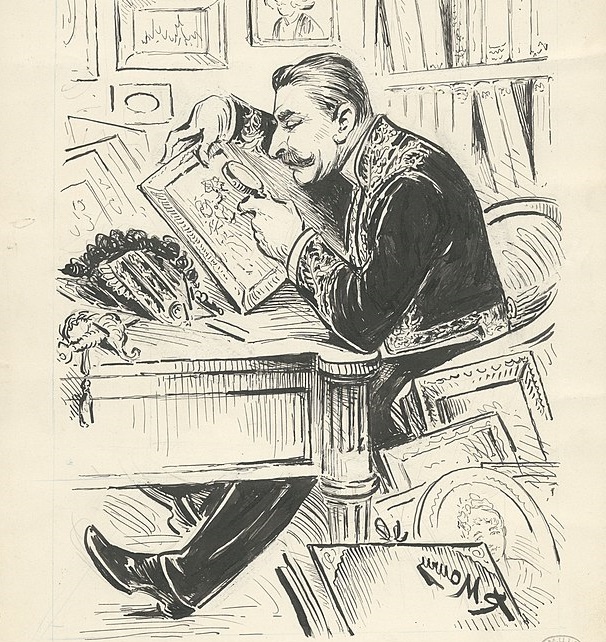
Maurice de, FLEURY « Hydrargyre », 1887 / Paris-Les îles
Anonymous

A short story was published in the May 1887 issue of the prestigious Revue indépendante. It remained unknown despite illustrating the best that the union of symbolism and decadence could produce in literature. Maurice de Fleury (1860–1931), psychiatrist and student of Doctor Charcot (1825–1893) collected this short story in Amours de savants (1891), dedicated to his master, Émile Zola. The scientific name of mercury is used here as a title for artistic prose mixing up the Seine and the expedient with which the two syphilitic lovers treat themselves. The psychotropic hallucination promotes the syncretism of the topographical, the medical and the poetic. It becomes a post-apocalyptic vision while providing a journey on the wave preceding the surrealism that will be offered by Jules Supervielle in “L’inconnue de la Seine” (1931).
« […] Elle, dépouillée de tout vêtement, ses grands cheveux éparpillés à la tiède brise, fuyait, ombre falote éperdue dans la nuit : et rien ne s’entendait que le flasque claquement de ses pieds nus sur le bitume, et le rythme anhélant de son souffle. Elle tourna, pour longer le Quai-aux-fleurs : au niveau de la Conciergerie, un verdissant rayon lunaire la baigna, la muant en vision lumineuse, exagérément pâle et nacrée. Alors, comme folle subitement, la femme fit sur la gauche un prodigieux bond, enjamba le parapet, et, levant les bras au ciel, se lança dans le fleuve. Lui, sans penser, derrière elle se rua.
Si brève que dut être la tournoyante évolution de sa culbute, il eut encore le temps de s’ébahir du reflet étrangement intense de la Seine, resplendissante à l’égal d’un métal en fusion… Une gifle géante, au niveau des reins le cingla. Sans enfoncer, il rebondit, se retrouva sur les talons, et d’une glissade formidable rejoignit sa maîtresse, près de laquelle il s’étala ; elle aussi, sans l’aide d’un mouvement, surnageait : un courant terrible les emporta.
Un moment, stupide de terreur nocturne et d’étrangeté, il se tint raide, sans un geste ; il se sentait bercé par un flot doux, caressant et souple, aux ondulations médiates d’un matelas d’eau : une invincible curiosité lui fit entr’ouvrir les paupières, il osa regarder.
Tout au ras de sa vue, ainsi qu’un lit géant, le fleuve en nappe indéfinie s’étalait, plat, sans une ride, plus poli qu’un miroir, glissant d’une homogène coulée de lave ; des plaques, çà et là, semblaient saupoudrées de poussière, et tout le reste, d’un luisant bleu de lame neuve, répercutait avec une pureté froide et la plus absolue netteté, au milieu, le disque lunaire, tout rond, non pourvu du panache flabellaire qu’il laisse traîner sur les eaux, si précisément redit, si brillant, qu’à le regarder il louchait, le voyait double ; autour, myriadaient les gouttelettes diamantées des étoiles.
— La Seine s’est changée en fleuve de mercure ! pensa-t-il, sans autrement s’inquiéter.
[…] Le fleuve coulait toujours entre deux gigantesques murailles ; des ponts, incessamment, se succédaient, au-dessus d’eux. A l’entour de leurs piles, le mercure se creusait en formidables remous : eux, sous les arceaux passaient comme deux flèches jumelées. Mais pourquoi donc les arches, tabliers, les garde-fous étaient-ils ainsi blancs, poussiéreux et rongés ? Le fer demeure inattaquable et ne saurait s’amalgamer : il en conclut à une fraude des ingénieurs officiels, diagnostiqua d’économiques substitutions de zinc ou d’étain ; et dans l’intimité de son cœur il conspua ces messieurs des ponts et chaussées pour leurs ruses prévaricatrices.
Maintenant, des nuages grisâtres envahissaient le ciel, ombraient la nappe d’hydrargyre. Une aube livide vert-de-grisait à l’horizon, là-bas, une bande étroite du ciel : c’était une aurore morne qu’on pressentait définitive et sans espoir de soleil à paraître ; elle montrait un lointain tournant du fleuve, et sur la rive droite apparaissaient, découpés sans perspective sur le fond de ternes lueurs, d’étranges monument calcinés et fantasques, de grêles colonnades obliquement décapitées et des façades de casernes démantelées, écornées aux angles, avec des milliers de fenêtres béantes, dont les pierres grumeleuses s’effritaient, sous un déluge de corrosives pluies. Un étendard aux couleurs problématiques planait sur ces cadavres d’édifices.
Et brusquement, avec la soudaineté d’un jeu de glaces au théâtre, le fleuve ralenti coula en rase campagne, dans un silence de néant. Sur les rives, de grands saules dormaient, rigides, dont les troncs étaient rougeâtres de vermillon badigeonné, et dont les rameaux inflexibles, comme les feuilles, avaient été taillés à l’emporte-pièce dans le zinc des piles de Bunsen. Par-delà s’étalait le désert, d’interminables plages pulvérulentes, ocreuses de turbith minéral, coupées de veines verdâtres, et que mamelonnaient par places de basses dunes arrondies, faites d’éthiops calcaire à la couleur grise. »
FLEURY, Maurice de, « Hydrargyre », La Revue indépendante (Paris), 1887, p. 263- 267.
En ligne
19th century | Novel, short story | In | Along | Under

Robert DESNOS, « Le veilleur du Pont-au-Change », 1944 / Paris-Les îles
Anonymous

In 1944, under the pseudonym of Valentin Guillois, Robert Desnos released, across a city of Paris occupied by Hitler’s German army, a long poem entitled “Le veilleur du Pont-au-Change”. This clandestine text engages poetry in resistance through hope, revolt and the fight against Nazism. It is a general call to humanity, shortly before his deportation to the Theresienstadt camp, where Desnos would meet his death.
« Je suis le veilleur de la rue de Flandre.
Je veille tandis que dort Paris.
Vers le nord un incendie lointain rougeoie dans la nuit.
J’entends passer des avions au-dessus de la ville.
Je suis le veilleur du Point du Jour.
La Seine se love dans l’ombre, derrière le viaduc d’Auteuil,
Sous vingt-trois ponts à travers Paris.
Vers l’Ouest j’entends des explosions.
[…]
Je suis le veilleur du Pont-au-Change
Ne veillant pas seulement cette nuit sur Paris,
Cette nuit de tempête sur Paris seulement dans sa fièvre et sa fatigue,
Mais sur le monde entier qui nous environne et nous presse.
Dans l’air froid tous les fracas de la guerre
Cheminent jusqu’à ce lieu où, depuis si longtemps, vivent les hommes."
[…]
DESNOS, Robert, Le Veilleur du Pont-au-Change [1944], repris dans Destinée arbitraire, Paris, ©Poésie-Gallimard, 1975, p. 229.
www.gallimard.fr
20th century | Poems | On | Along

Vladimir NABOKOV, « L’Inconnue de la Seine », 1934 / Paris-Les îles.
Anonymous

Vladimir Nabokov (1899–1977) was in Berlin in 1934 when a book with a picture of the Unknown Woman of the Seine’s death mask displayed on the cover was published; the short story was entitled Die Unbekannte (The Unknown), by Reinhold Conrad Muschler (1882–1957). A few months later, the future author of <i<Lolita (1955) returned to this theme with an untitled eight-quatrain poem written in Russian that he published in the Parisian newspaper Poslednie novosti (28th of June 1934). The author included the poem in all his subsequent anthologies and considered it worthy of being published in English, entitling it “L’Inconnue de la Seine” each time.
L’Inconnue de la Seine
"Urging on this life’s denouement,
Loving nothing upon this earth,
I keep staring at the white mask
Of your lifeless face.
Strings, vibrating and endlessly dying.
With the voice of your beauty call.
Amidst pale crowds of drowned young maidens
You’re the palest and sweetest of all.
In music at least linger with me !
Your lot was chary of bliss.
Oh, reply with a posthumous half-smile
Of your charmed gypsum lips !
Immobile and convex the eyelids.
Thickly matted the lashes. Reply -
Can this be for ever, for ever ?
Ah, the way they could glance, those eyes !
Touchingly frail young shoulders,
The black cross of a woolen shawl,
The streetlights, the wind, the night clouds,
The harsh river dappled with dark."
En français :
« L’inconnue de la Seine »
"De cette vie précipitant le terme,
et n’aimant rien sur cette terre,
longuement je contemple le masque
blanc de ta face sans vie.
En longs échos qui se prolongent
j’entends la voix de ta beauté.
Dans la foule pâle des jeunes noyées
Tu es la plus pâle et la plus aimable.
Reste avec moi, reste au moins en musique,
le sort t’alloua si peu de bonheur,
Et que tes lèvres d’outre-mort,
enchanteresses, me dédient leur sourire de chaux.
Immobiles, bombées, tes paupières,
tes cils touffus et collés. Oh,
réponds : à jamais, vraiment à jamais ?
Toi qui sus si bien regarder !
Jeunes épaules maigrelettes,
croix noire du fichu de laine,
Vent, lampes, nocturnes nuées,
rivière mauvaise pommelée de noir."
Vladimir NABOKOV, « L’inconnue de la Seine » [1934], Poèmes et problèmes / traduit du russe et de l’anglais par Hélène Henry, Paris, ©Gallimard, 1970, p. 99 (« Du monde entier »).
www.gallimard.fr
20th century | Poems | On
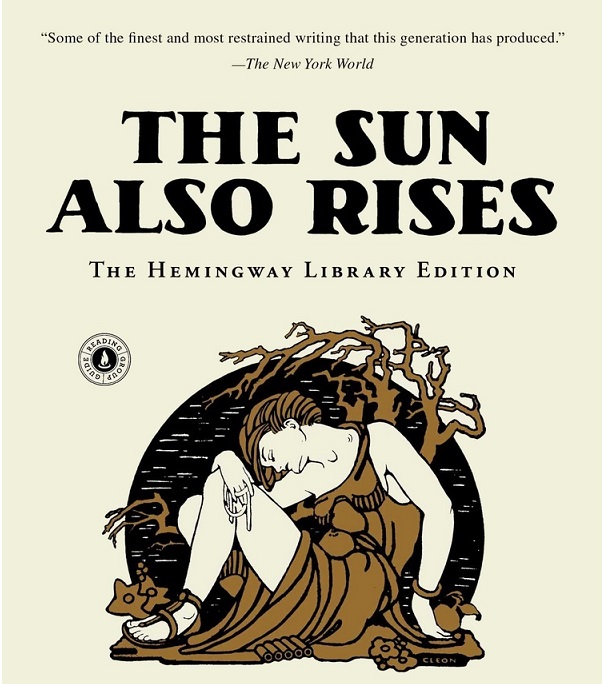
Ernest HEMINGWAY, Le Soleil se lève aussi, 1926 / Paris-Les îles.
Anonymous

The American writers of the Lost Generation portrayed a generally happy picture of the river Seine, although a certain melancholy is still mixed in. In Ernest Hemingway’s (1899-1961) first novel, The Sun Also Rises (Le Soleil se lève aussi) from 1926, the main character, Jake Barnes, and his old friend Bill, who has also been expatriated, head to the Île Saint-Louis for dinner. The night-time stroll they take afterwards to process the day’s events features the river and its charming banks in an excerpt where the meticulous use of litotes – which is so characteristic of Hemingway’s writing – shows how the narrator misses the woman he loves, through intricate details about this grandiose urban landscape, including the most ordinary passers-by.
The wooden footbridge they walk across was built between 1924 and 1928 to connect the island to the left bank whilst the new Pont de la Tournelle (inaugurated in 1928) was being built, as the old stone bridge had been demolished in 1918.
"We walked along under the trees that grew out over the river on the Quai d’Orléans side of the island. Across the river were the broken walls of old houses that were being torn down.
“They’re going to cut a street through.”
“They would,” Bill said.
We walked on and circled the island. The river was dark and a bateau mouche went by, all bright with lights, going fast and quiet up and out of sight under the bridge. Down the river was Notre Dame squatting against the night sky. We crossed to the left bank of the Seine by the wooden foot-bridge from the Quai de Bethune, and stopped on the bridge and looked down the river at Notre Dame. Standing on the bridge the island looked dark, the houses were high against the sky, and the trees were shadows.
“It’s pretty grand,” Bill said. “God, I love to get back.”
We leaned on the wooden rail of the bridge and looked up the river to the lights of the big bridges. Below the water was smooth and black. It made no sound against the piles of the bridge. A man and a girl passed us. They were walking with their arms around each other."
Ernest HEMINGWAY, The Sun Also Rises [1926], New York, Simon & Schuster, coll. « Scribner Paperback Fiction », 1959, p. 82-83.
Ernest HEMINGWAY, Le Soleil se lève aussi / traduit de l’américain par Maurice-Edgar Coindreau, Paris © Gallimard, 1949. Citation extraite du volume Folio, 2018, p. 93
www.gallimard.fr
20th century | Novel, short story | On | Along

Jacques PRÉVERT, « Chanson de la Seine », 1949 / Paris-Les îles
Anonymous

Jacques Prévert (1900–1977) often sang the Seine’s praises. It’s one of his poems that Fabien Loris (1906–1979) sings during the credits of Aubervilliers (1945), a documentary short film directed by Éli Lotar (1905–1969) aiming to raise awareness amongst the population about the difficult living conditions in suburban Paris. The poet added a few lines to this “Chanson de la Seine” in Spectacle (1951). The river then embodies movement, freshness and openness to the world, in contrast with the fixity of the stone or the institutions. It possesses a power of attraction made up of youth, frivolity and flexibility.
"Chanson de la Seine"
« La Seine a de la chance
Elle n’a pas de soucis
Elle se la coule douce
Le jour comme la nuit
Et elle sort de sa source
Tout doucement sans bruit,
Et sans se faire de mousse
Sans sortir de son lit
Elle s’en va vers la mer
En passant par Paris.
La Seine a de la chance
Elle n’a pas de soucis
Et quand elle se promène
Tout au long de ses quais
Avec sa belle robe verte
Et ses lumières dorées
Notre-Dame jalouse
Immobile et sévère
Du haut de toutes ses pierres
La regarde de travers
Mais la Seine s’en balance
Elle n’a pas de soucis
Elle se la coule douce
Le jour comme la nuit
Et s’en va vers Le Havre
Et s’en va vers la mer
En passant comme un rêve
Au milieu des mystères
Des misères de Paris. »
Jacques PRÉVERT, « Aubervilliers, Chanson de la Seine III », Spectacle, Paris, ©Gallimard, 1949. Citation extraite du volume Folio, p. 174.
www.gallimard.fr
20th century | Poems | On | In | Along

Nouvelle traduction : « La dormeuse », 2003 / Paris-Les îles
Rolande CAUSSE

Rolande Causse (1939-) offers a charming figuration of the Seine in this poem entitled Paris poésie (2003), a beautifully illustrated collection published by Actes Sud Junior. The personification of the river adds to a flowing versification so that the text, the picture, the rhythm and the imagination, in no way naive, become one. They lead us, daily, as if towards the past, but also towards myth and dreamy contemplation.
« La Seine courbe son corps
D’une peau de pierre usée.
De l’île Saint-Louis à l’île de la Cité
Bat le cœur de la frileuse dormeuse.
Son visage d’onde, Ophélie enchantée.
Ses bras s’étendent aux boulevards animés,
Ses mains, aux longs doigts fragiles comme des rues,
Se délassent avec langueur du tohu-bohu.
Le bois de Boulogne enserre sa chevelure.
La Petite Ceinture cerne sa monture.
Yeux fermés, souffle adouci,
Courant léger, nuit de Paris. »
CAUSSE, Rolande, « La dormeuse », Paris poésie, Arles, Actes Sud junior, 2003, p. 50-51.
21st century | Poems
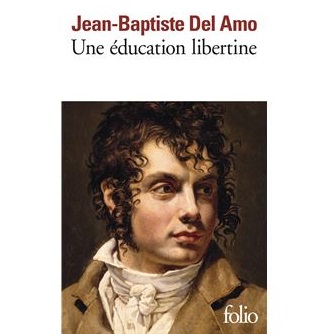
Nouvelle traduction : Une éducation libertine, 2009 / Paris-Les îles
Jean-Baptiste DEL AMO

In around 1760, Gaspard left his hometown of Quimper after his father’s death and headed to Paris. The main character of the novel Une Éducation libertine (2008) comes across the Seine after wandering around the capital’s streets and the “astounded” protagonist beholds a truly syncretic scene, courtesy of Jean-Baptiste Del Amo (1981-). In this case, literature prevails.
« Puis la Seine fut là, son odeur de vase, la monstruosité de son agitation portuaire. Gaspard s’arrêta, ébahi. Le flot noir exhalait une frénésie qui s’étendait, une pieuvre lançant ses tentacules à l’assaut de la ville. Fiacres et carrosses se talonnaient sur les rives. Les cochers, véritables harpies, fouettaient et hurlaient à plein gosier. La populace se massait là, grouillait comme d’une termitière, avançait par vagues sur les berges. À quai, les bateaux dégorgeaient les marchandises dans des caisses de bois que des marins musculeux et braillards soulevaient à bout de bras. […] Au bord de l’eau, les lingères, fichus vissés sur leurs crânes furibonds, plongeaient jusqu’aux coudes draps et haillons, savonnaient, frottaient, essoraient. Elles répandaient une mousse à la couleur indéfinissable qui descendait pesamment le Fleuve. […] Plus loin, on ouvrait les guinguettes, les auberges se vidaient de leurs hôtes à demi reposés et parfaitement fauchés. Montant et descendant les rives, les porteurs d’eau feintaient la cadence infernale, se jetaient à l’eau, emplissaient les seaux, s’arrachaient des flots, couraient en sens inverse. Les passeurs plantaient leurs barques entre les bateaux. Ils embarquaient la foule des travailleurs de l’autre rive, s’engueulaient, frappaient l’eau à grands coups de pagaie, filaient au travers du Fleuve, évitaient l’inévitable : la collision, l’accident, le naufrage. Il n’était pas rare qu’un homme tombât à l’eau, fût entraîné par le courant ou les profondeurs du Fleuve. »
Jean-Baptiste DEL AMO, Une éducation libertine, Paris, ©Gallimard, 2009. Citation extraite du volume Folio, p. 38.
www.gallimard.fr
21st century | Novel, short story | On | In | Along
